NanoMolar
Graphene Bio-Marker Sensing
2024
Concept, Development + Electronics
NanoMolar
Precision detection of biomarker concentration: Replacing blood tests with sweat and saliva tests.
NanoMolar, a leading startup in non-invasive bio-sensing technology in partnership with the National University of Singapore (NUS) has reached a key milestone with the arrival of their first device proof of concept prototypes Designed by D+I. The concept of creating an extremely accurate bio-chemical graphene sensor started almost 20 years ago, when it was theoretically clear that graphene, being one atom thick would be perfect for bio-chemical detection. After 2 decades of evolution in the quality of graphene production, research into detailed control of graphene's chemical functionalization, this theory has become a reality.
Collaborative Development
Multidisciplinary team and extensive research ensures safety, efficacy and optimised usability.
In collaboration with research and industry partners, NanoMolar have developed a graphene-based screen printed electrode sensor that offers unmatched precision in detecting biomarkers in sweat. Sweat, as a biological medium, has unique properties, such as identifying local concentrations of biomarkers from the body compared to an average found in blood. The technology can be used to identify concentrations of a host of specific Electrolytes, Metabolites, Vitamins, Hormones, Proteins, Peptides and Xenobiotics. In line with the delivery of the first prototype systems, NanoMolar's in-house fabrication capabilities can now accommodate production of hundreds of pilot customised sensors with chemical functionalization. These tailored sensors, powered by their patented technology, provide a rapid, simple, reusable, and cost-effective solution for detecting various biomarkers.
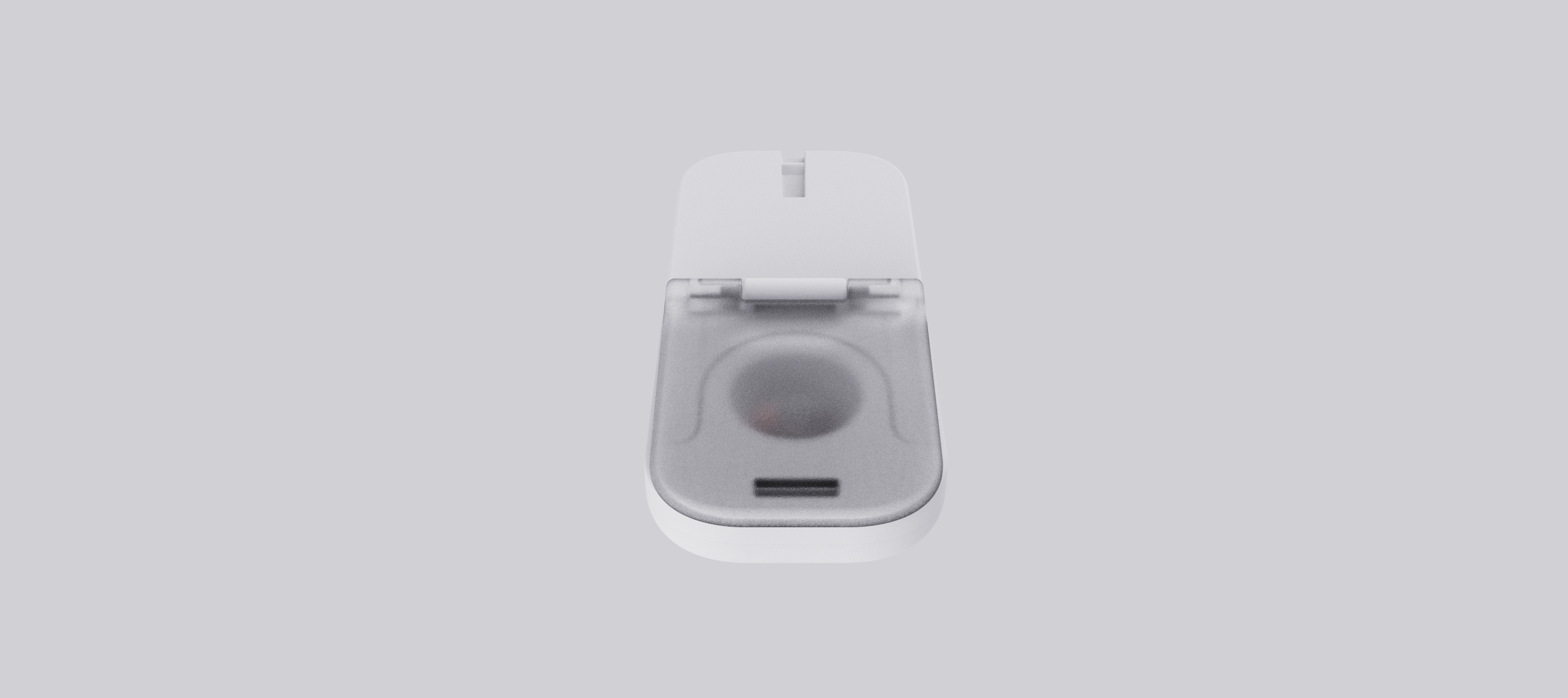

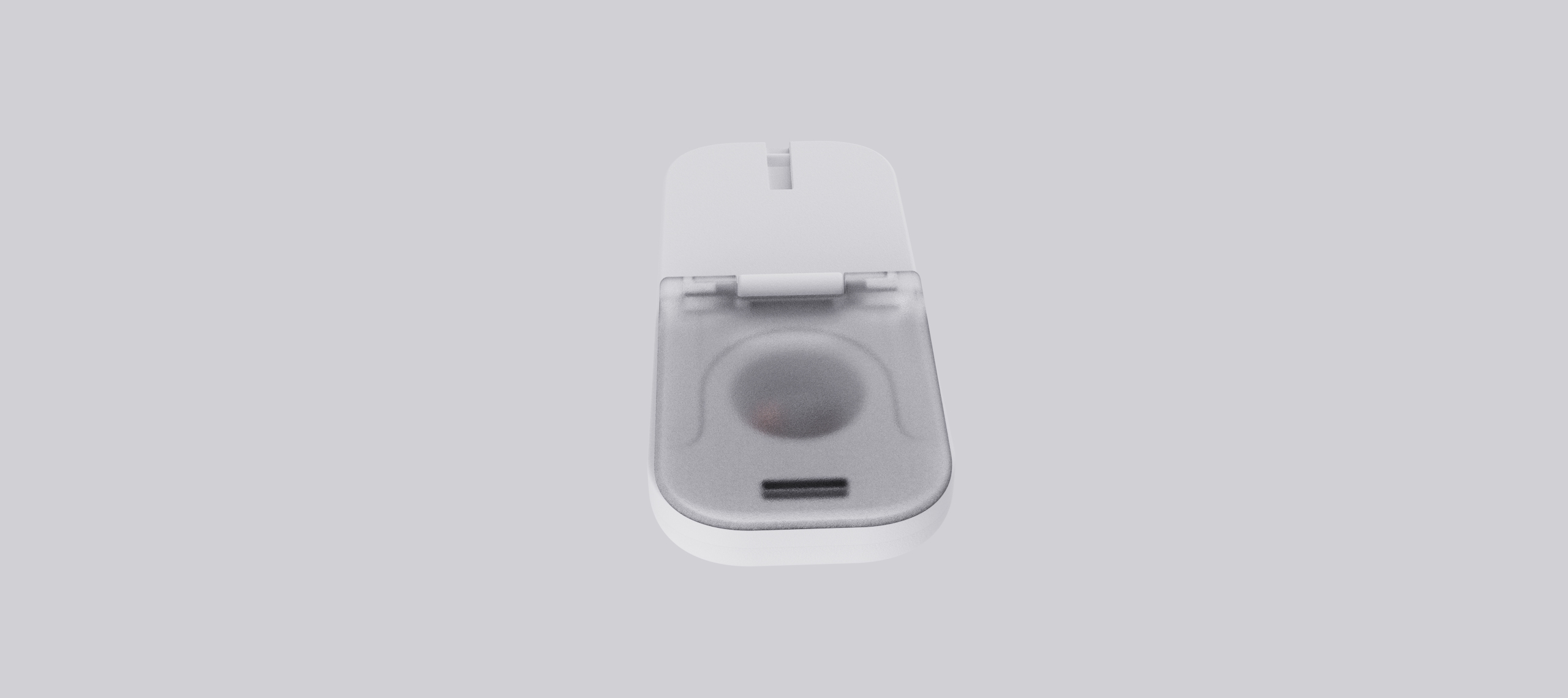
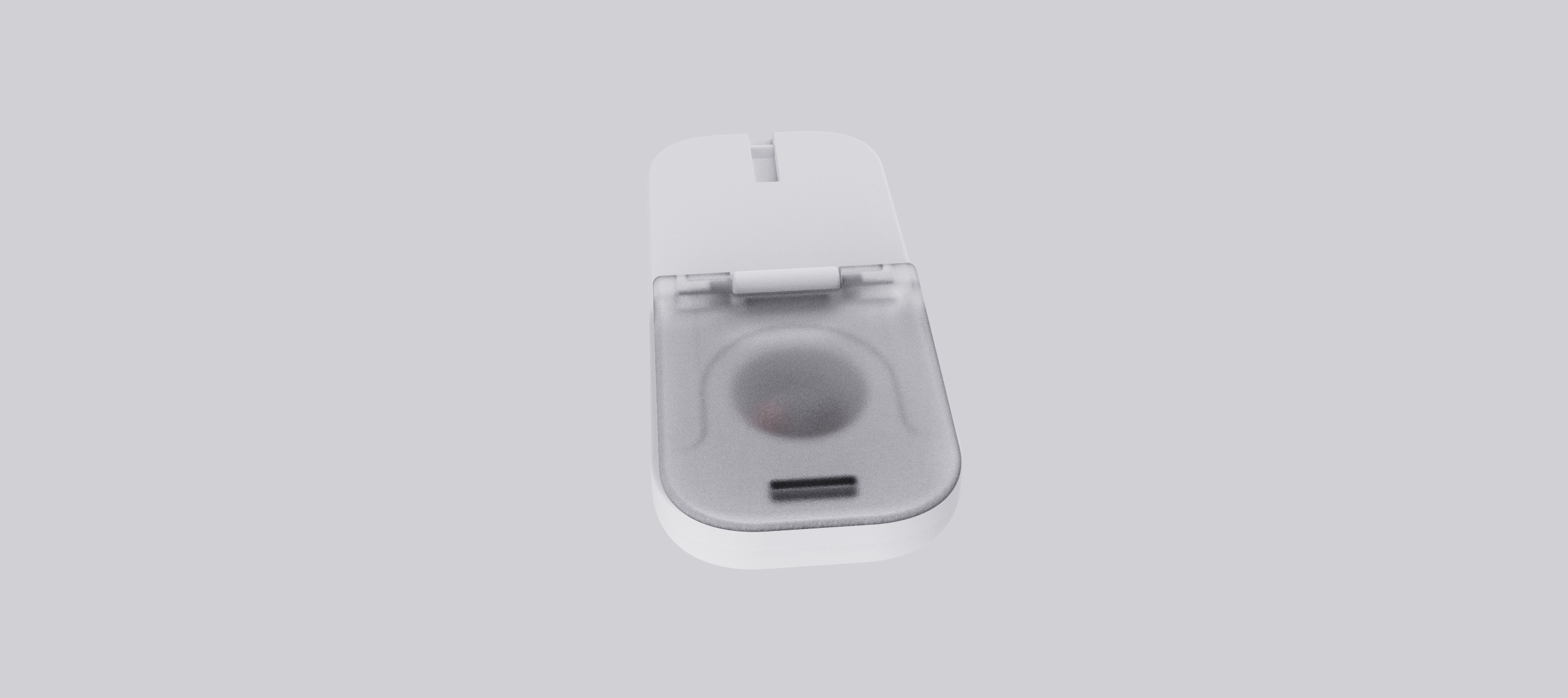
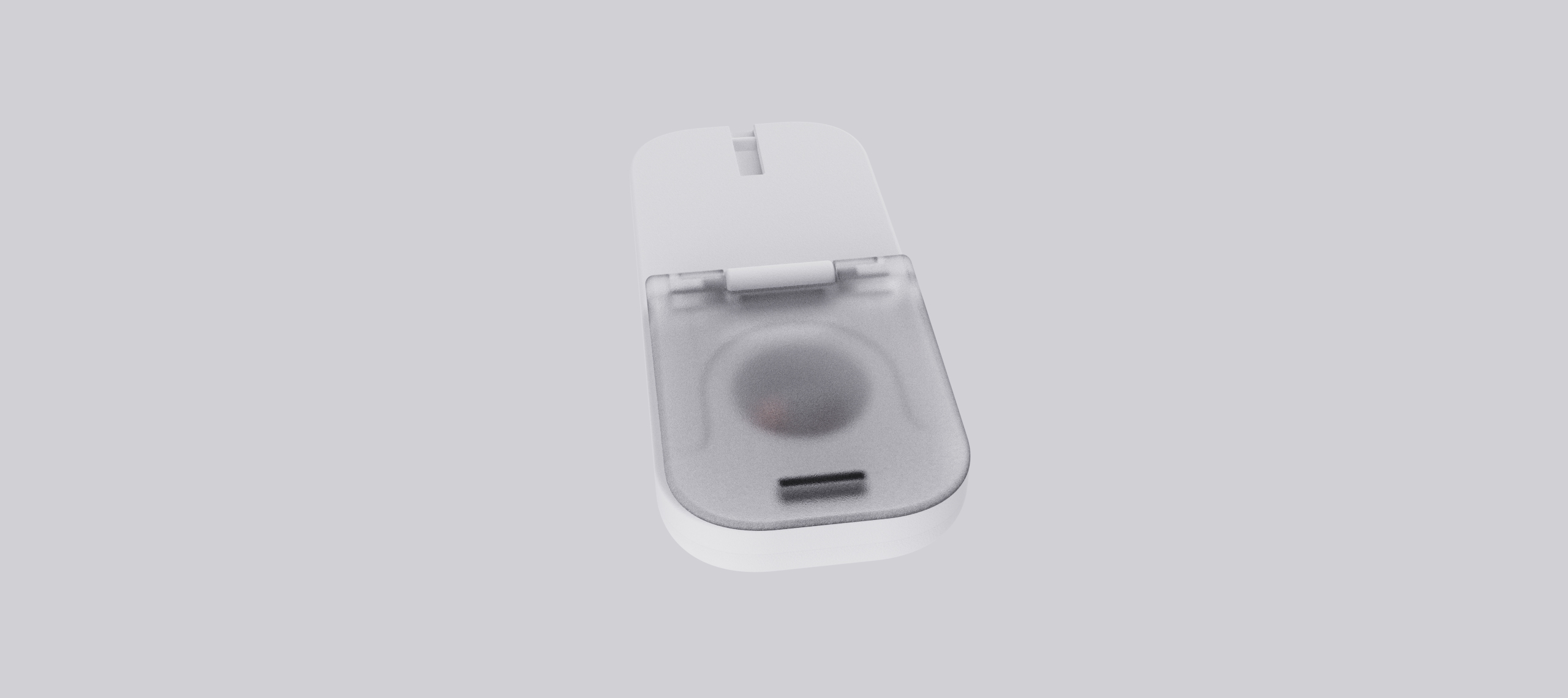
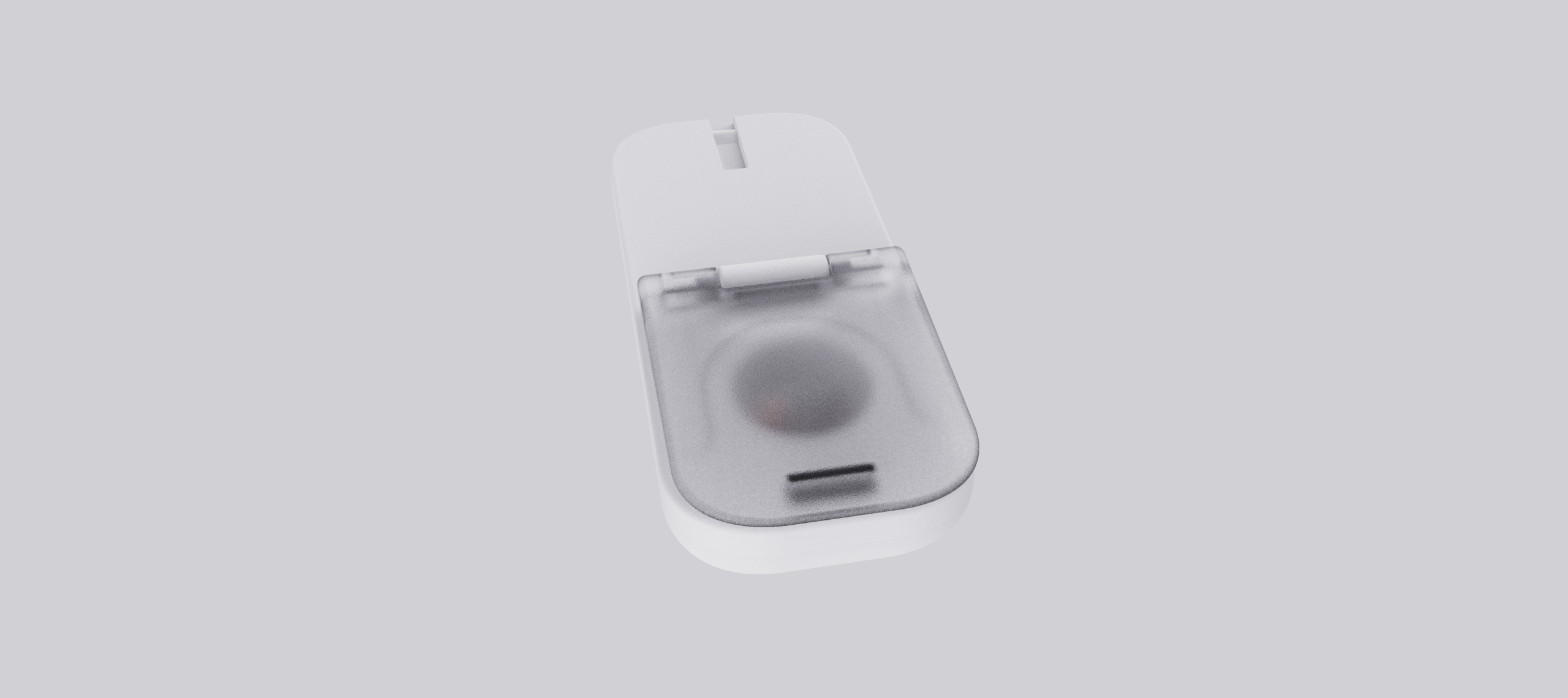
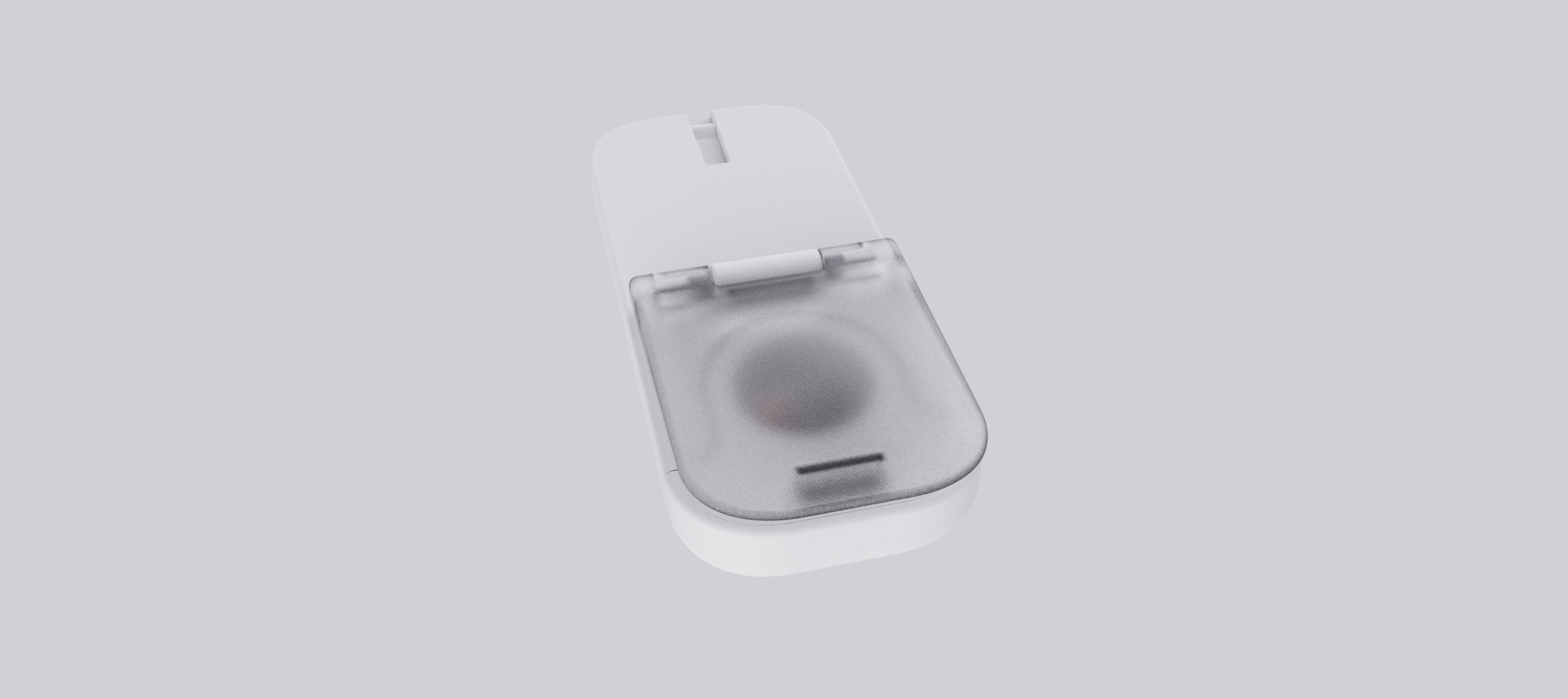
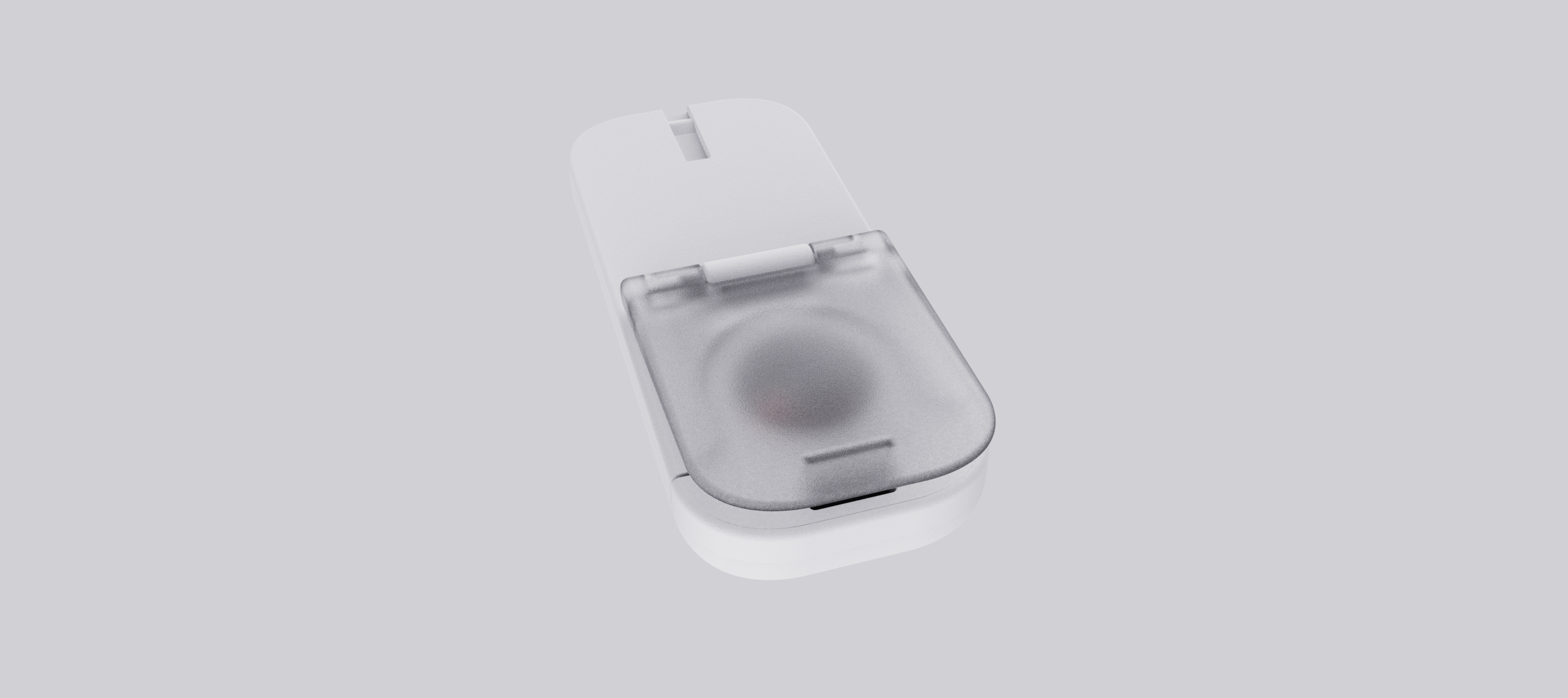
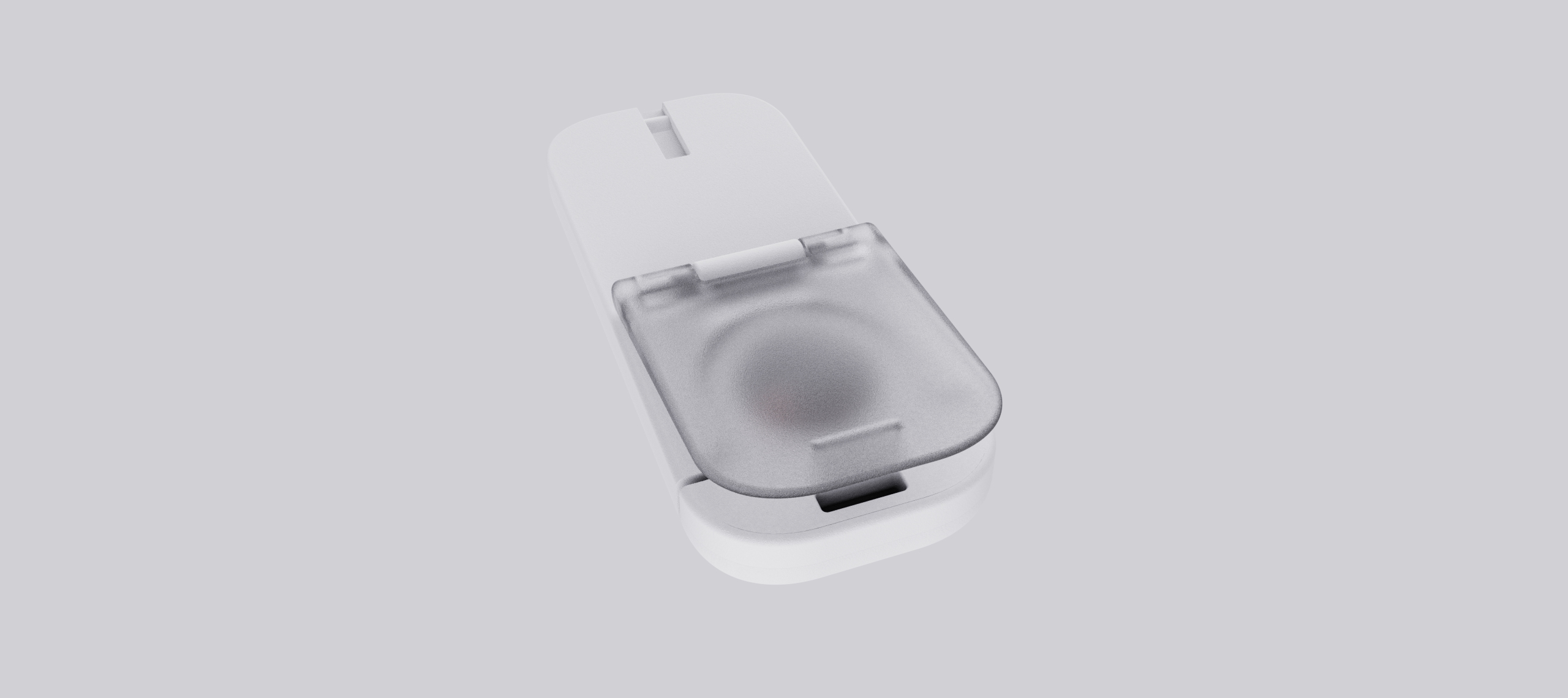
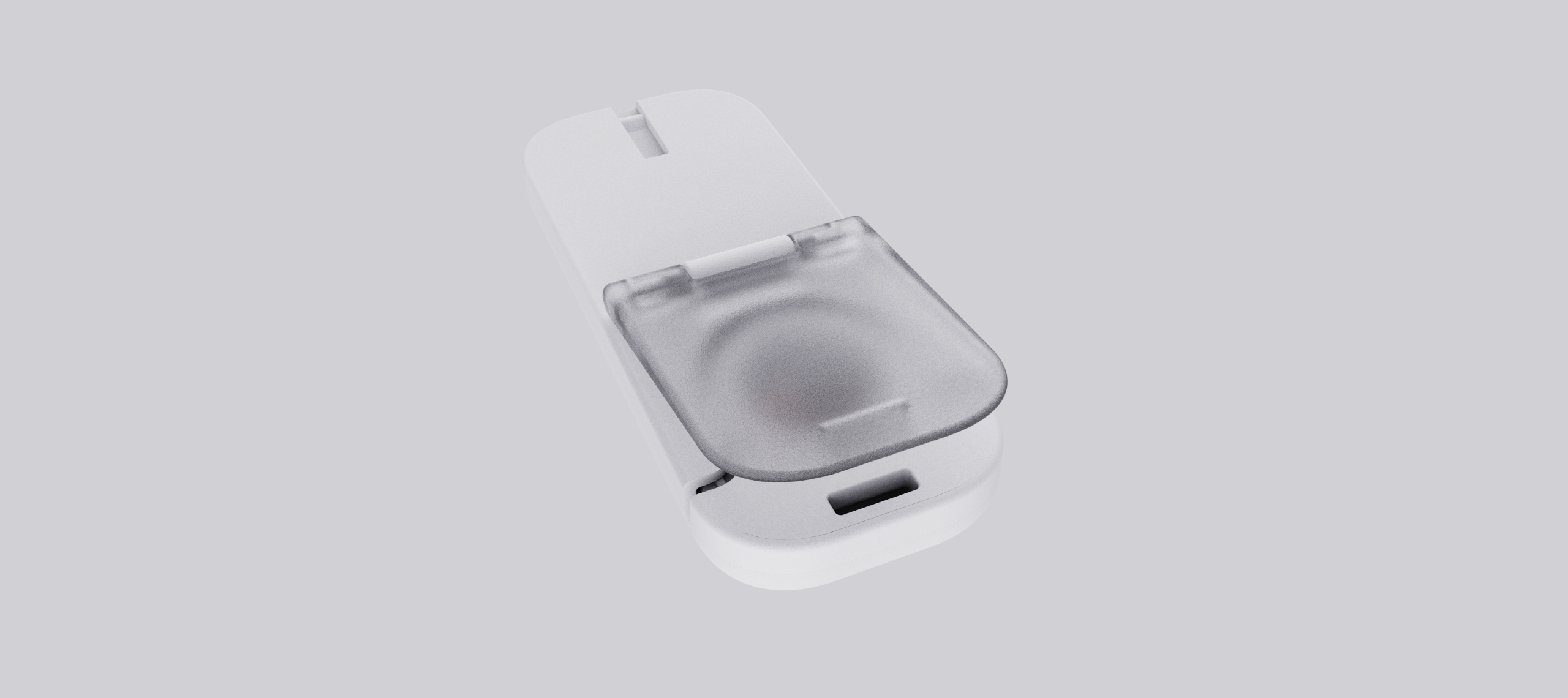
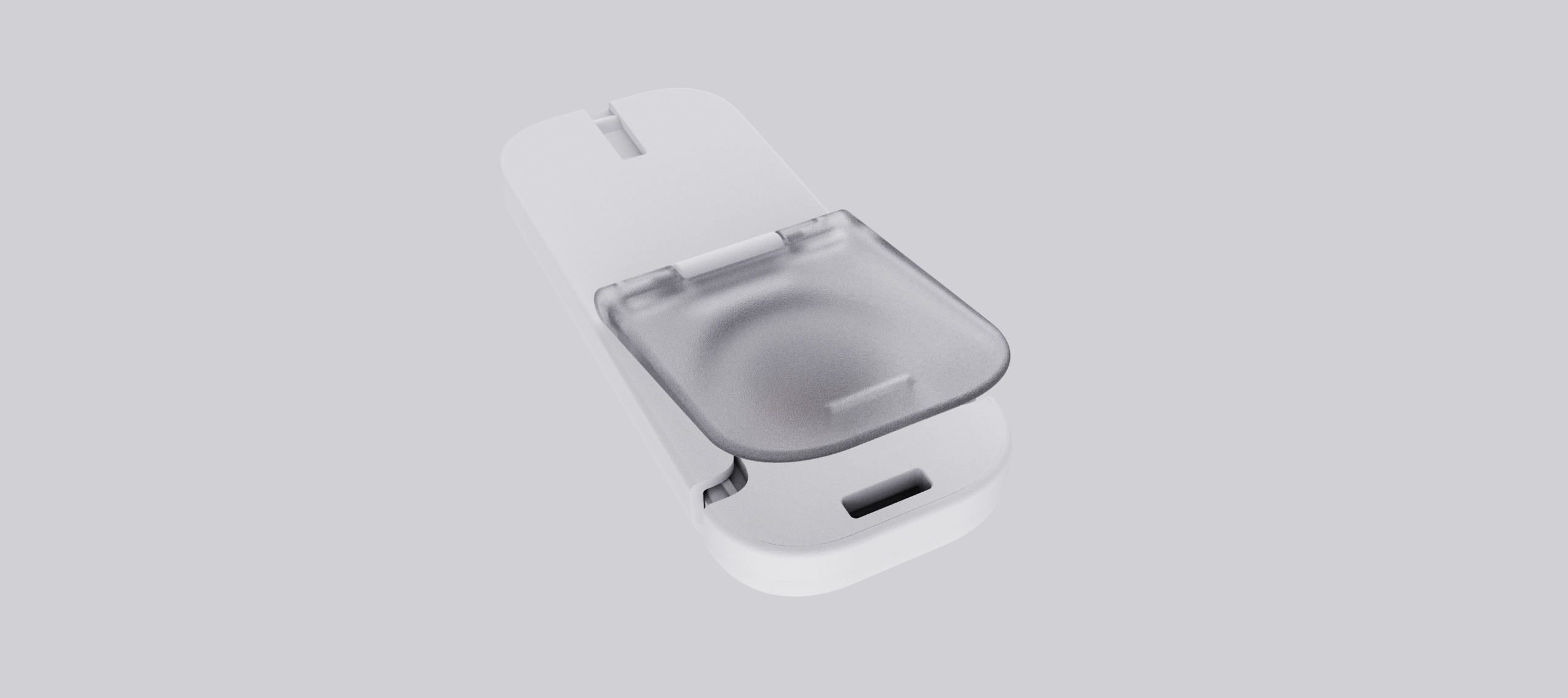
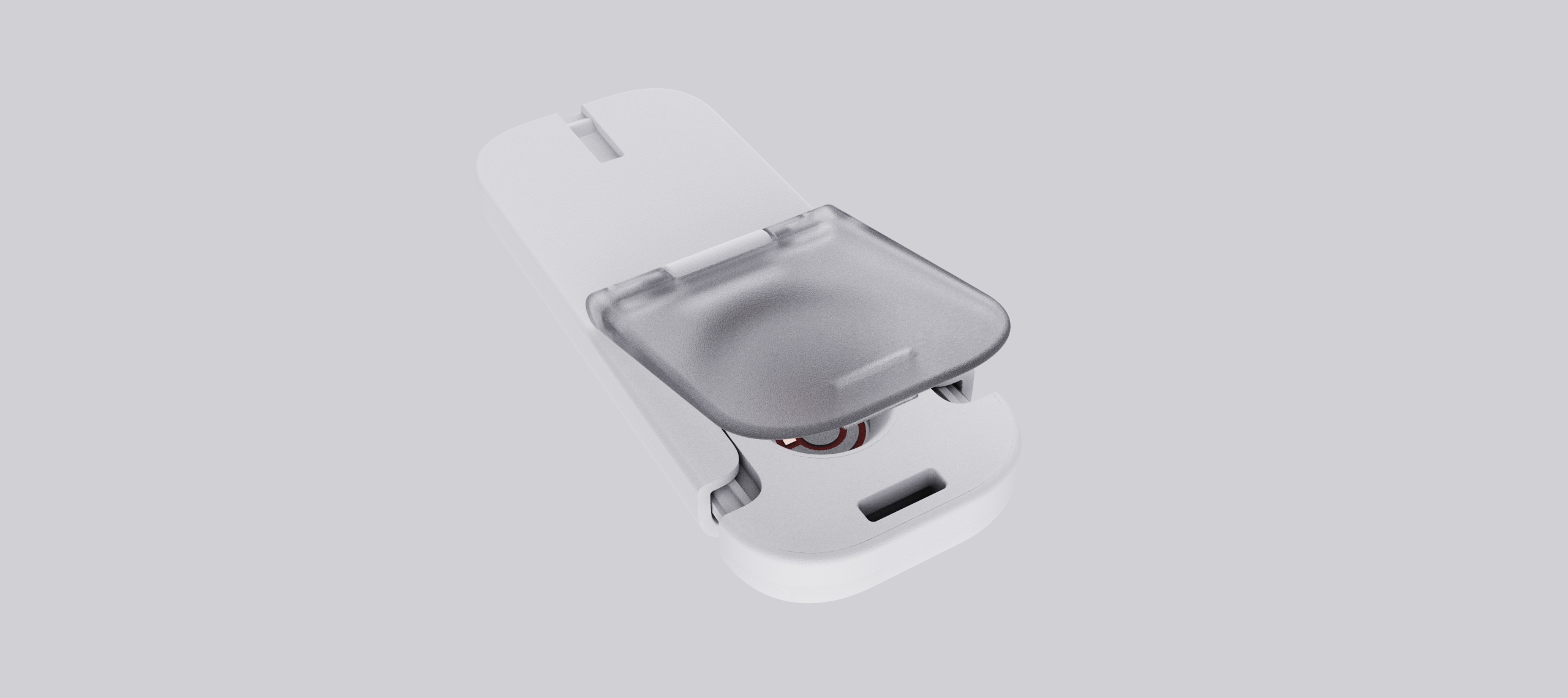
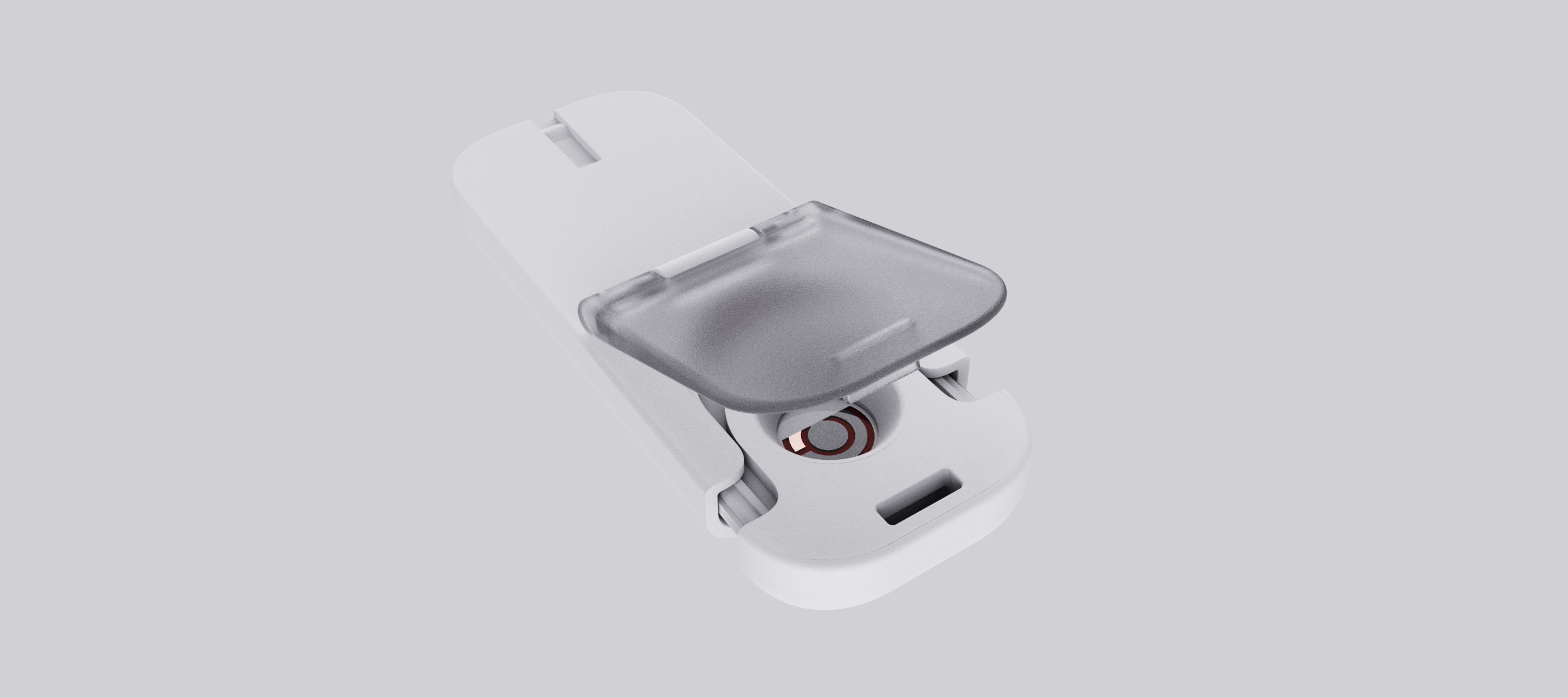
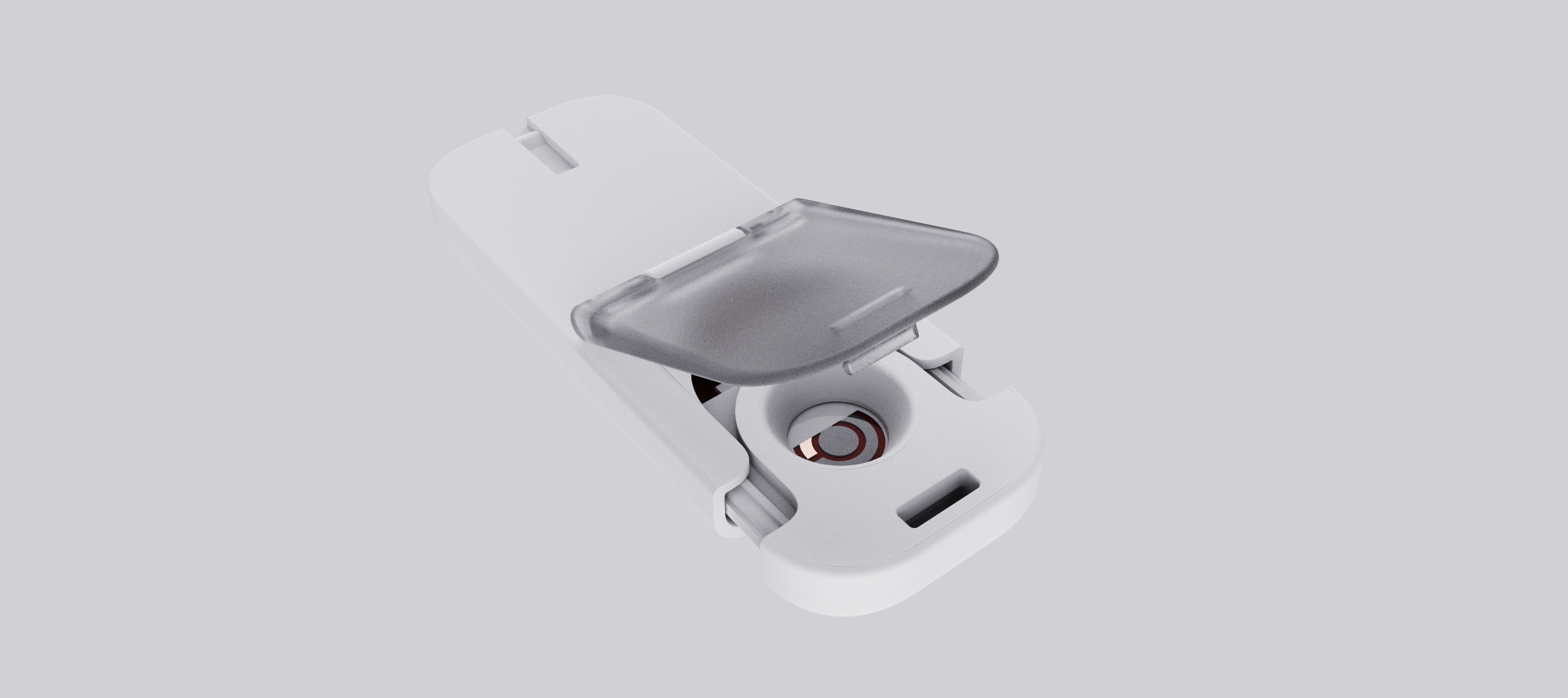
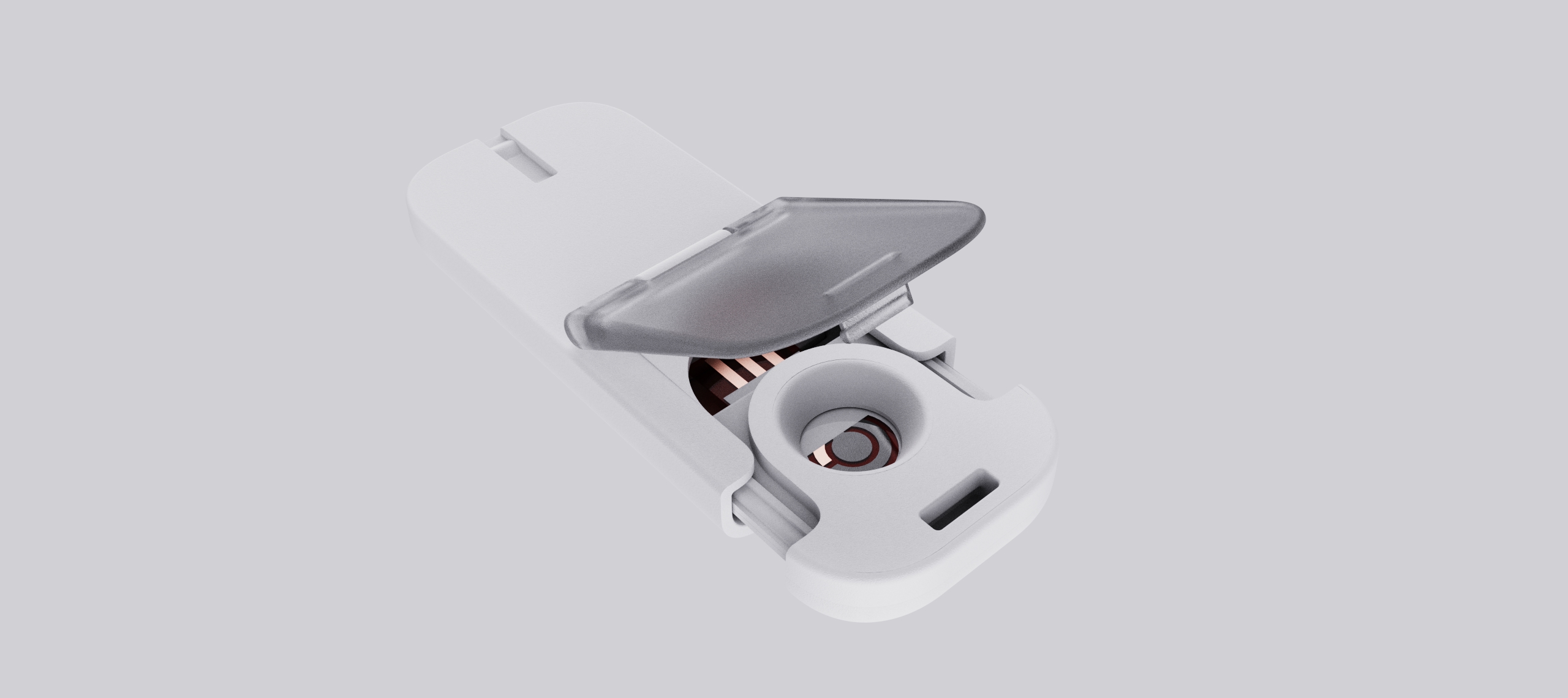
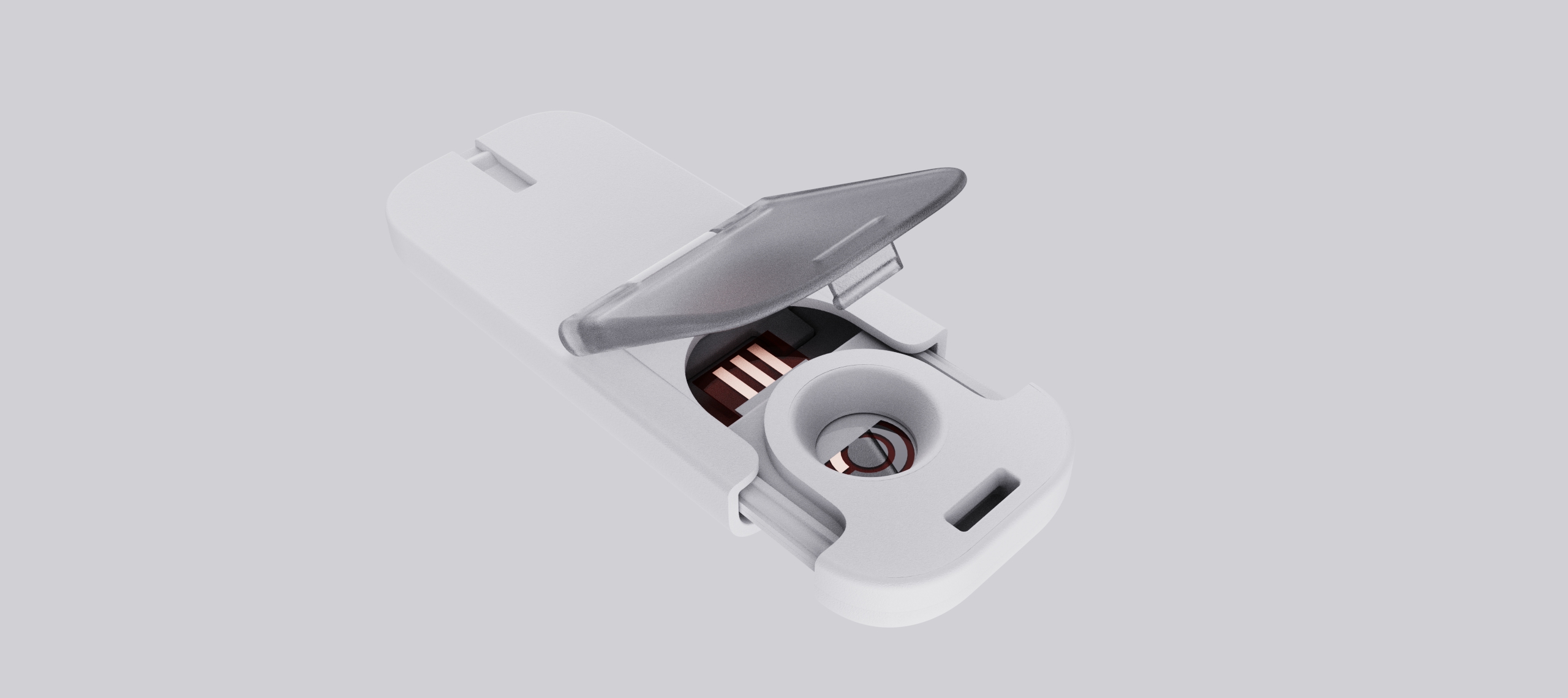
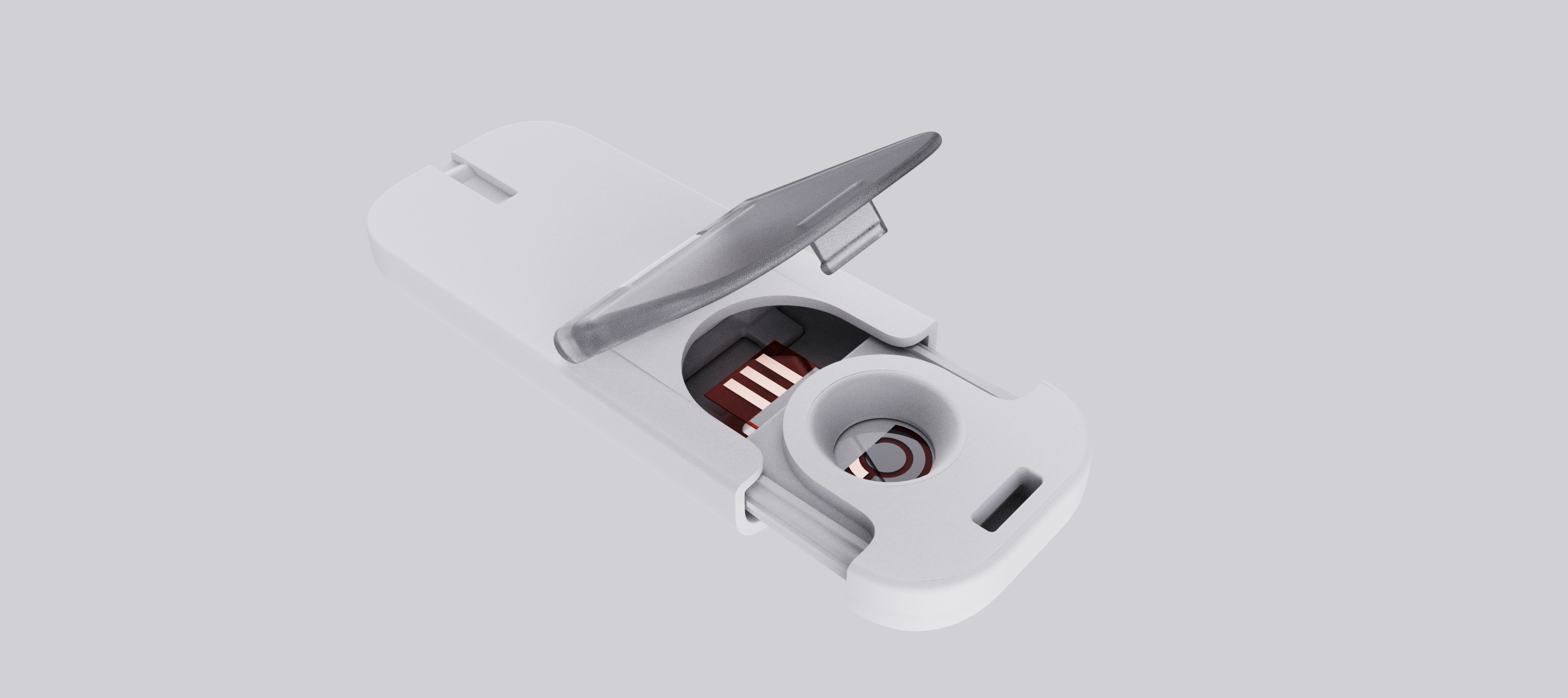
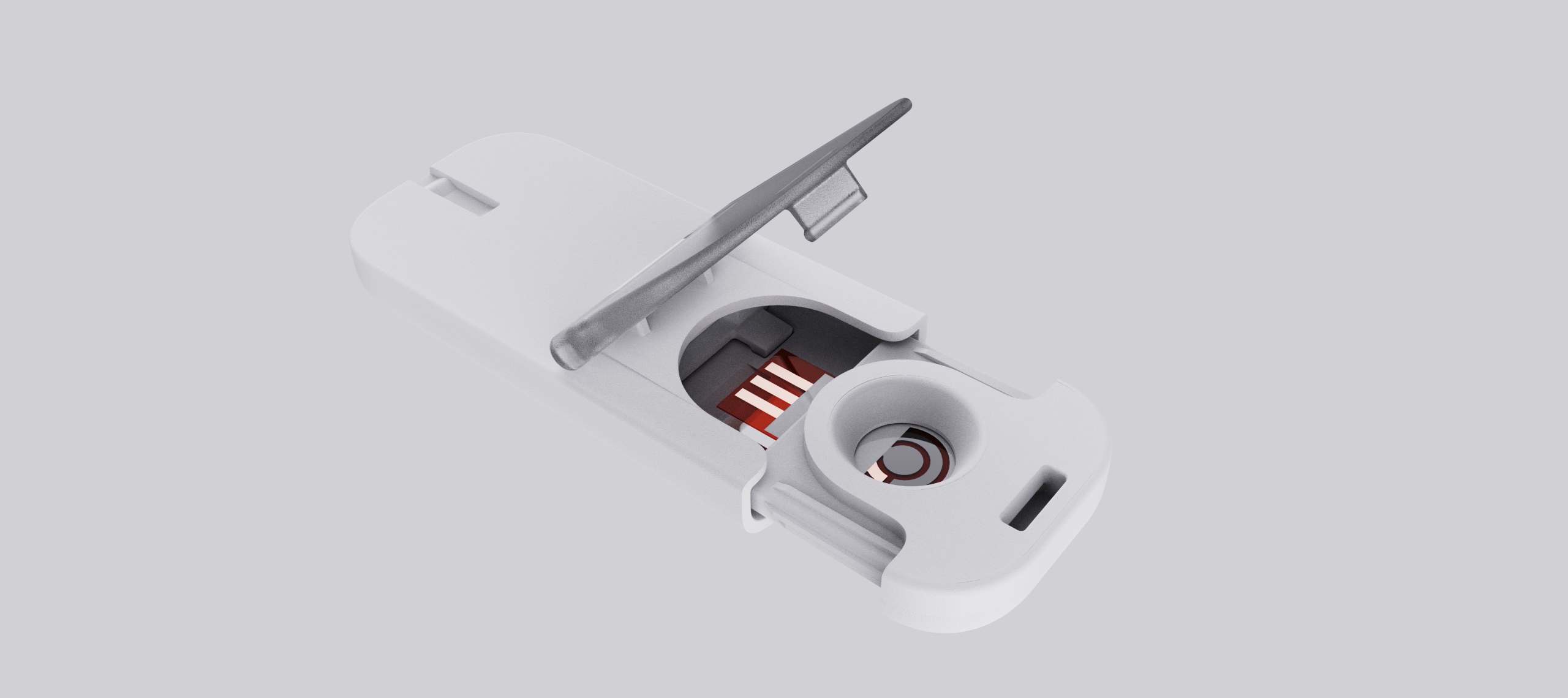
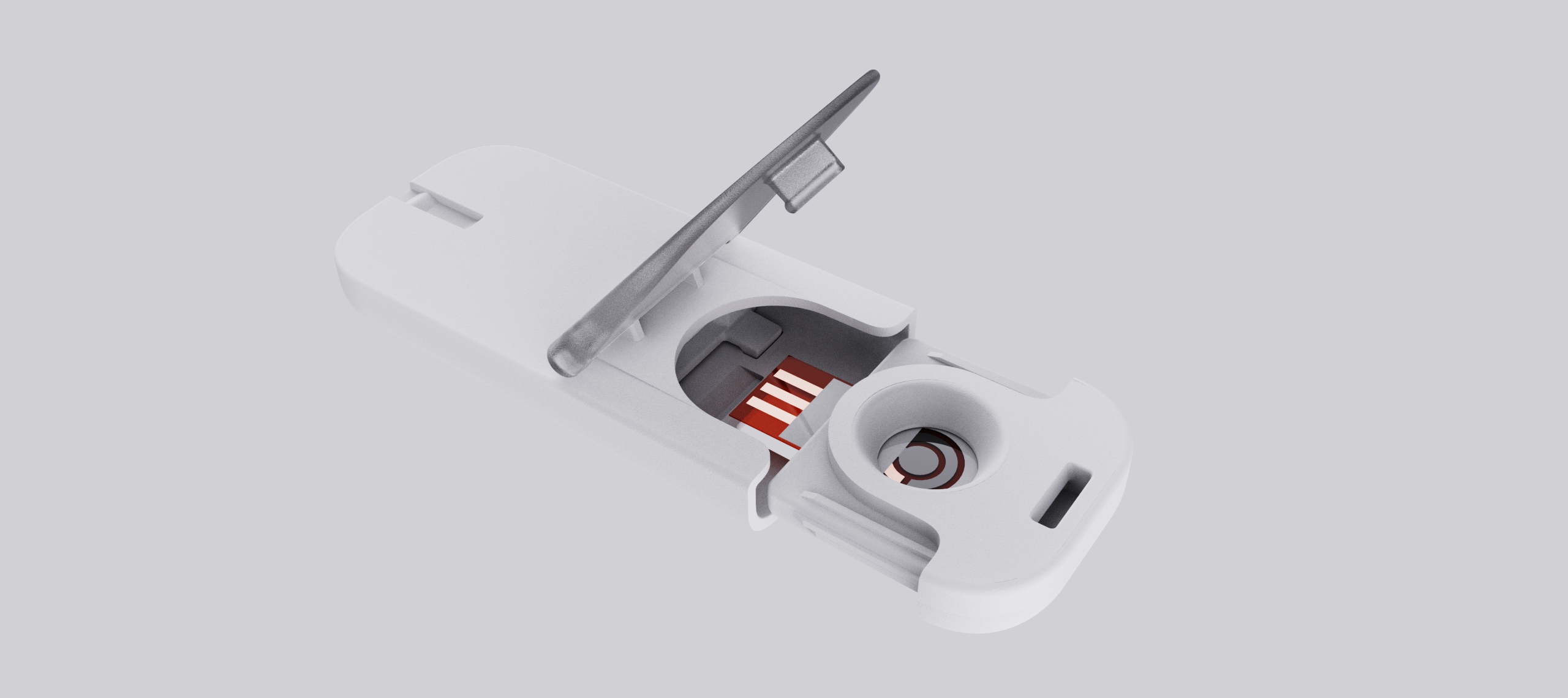
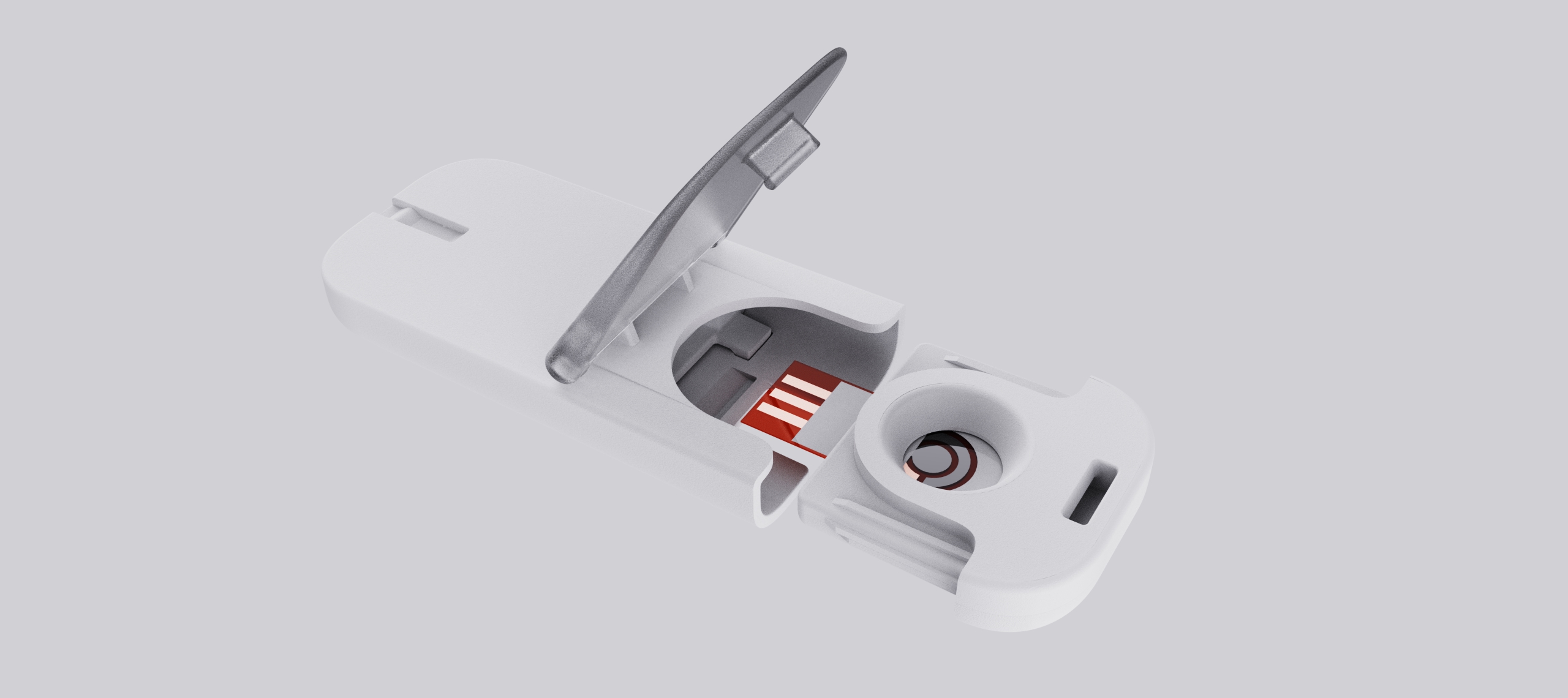
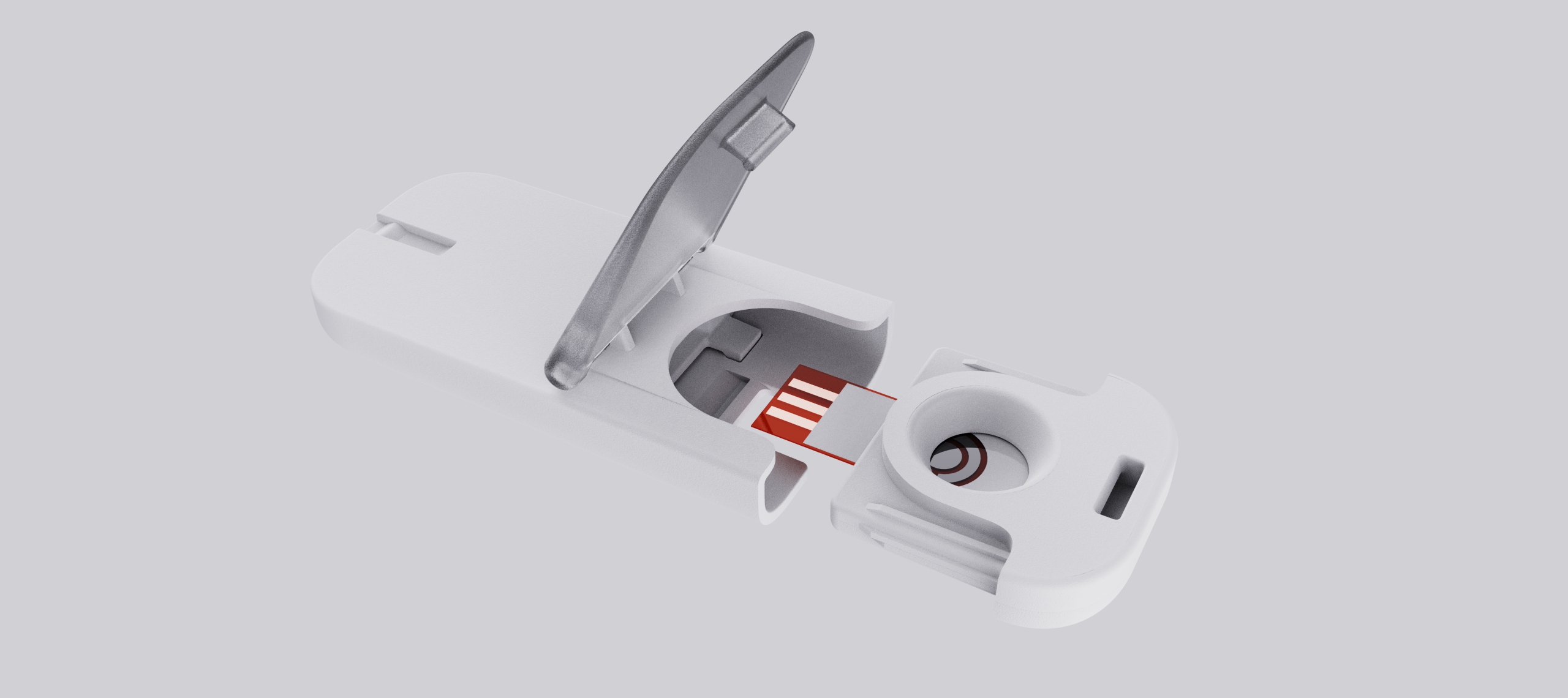
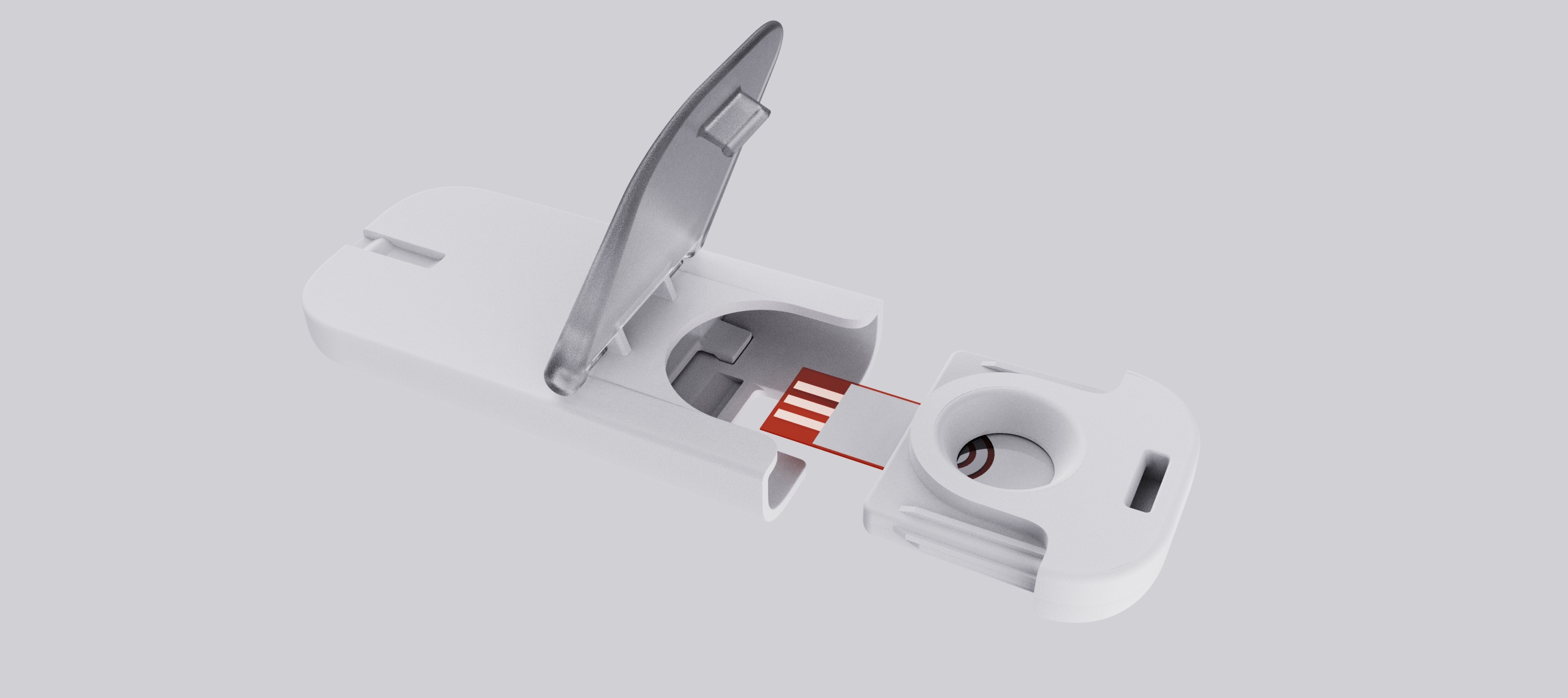
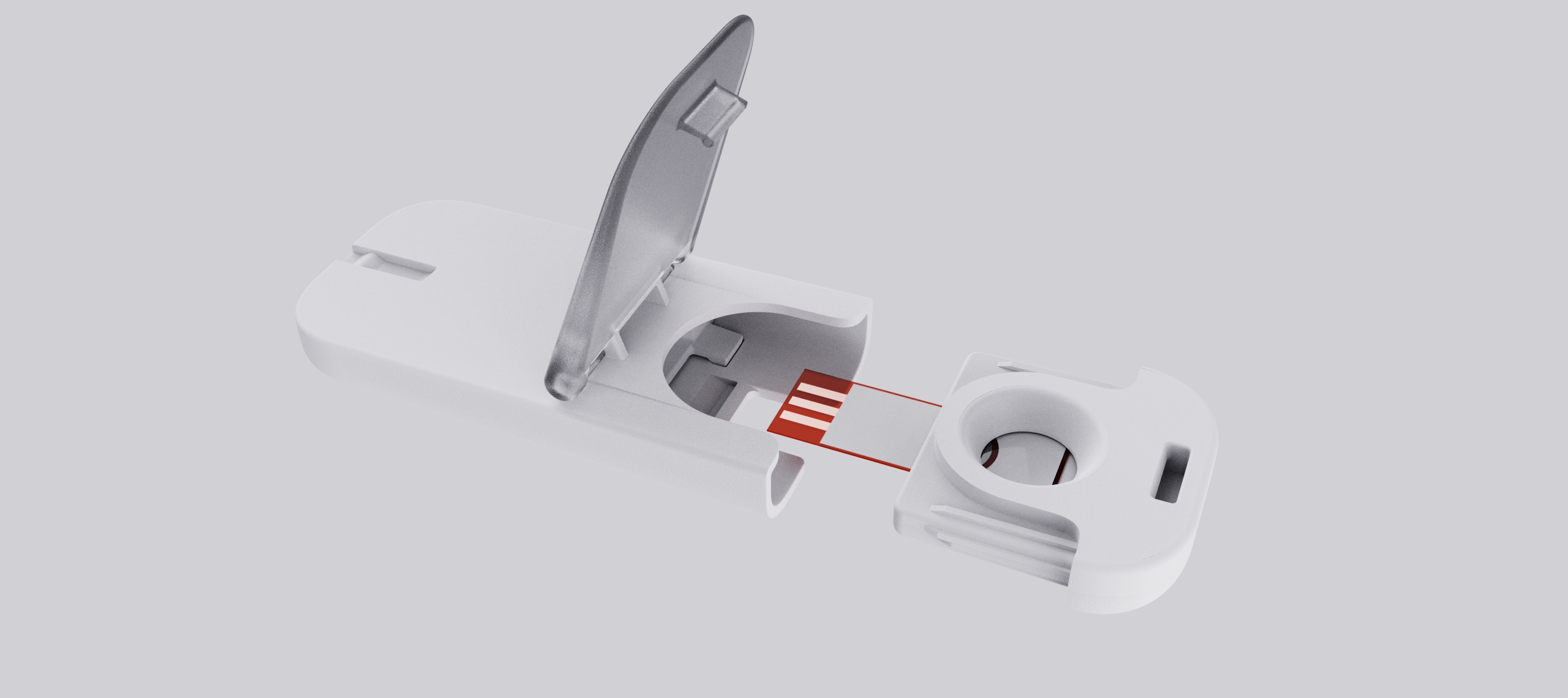
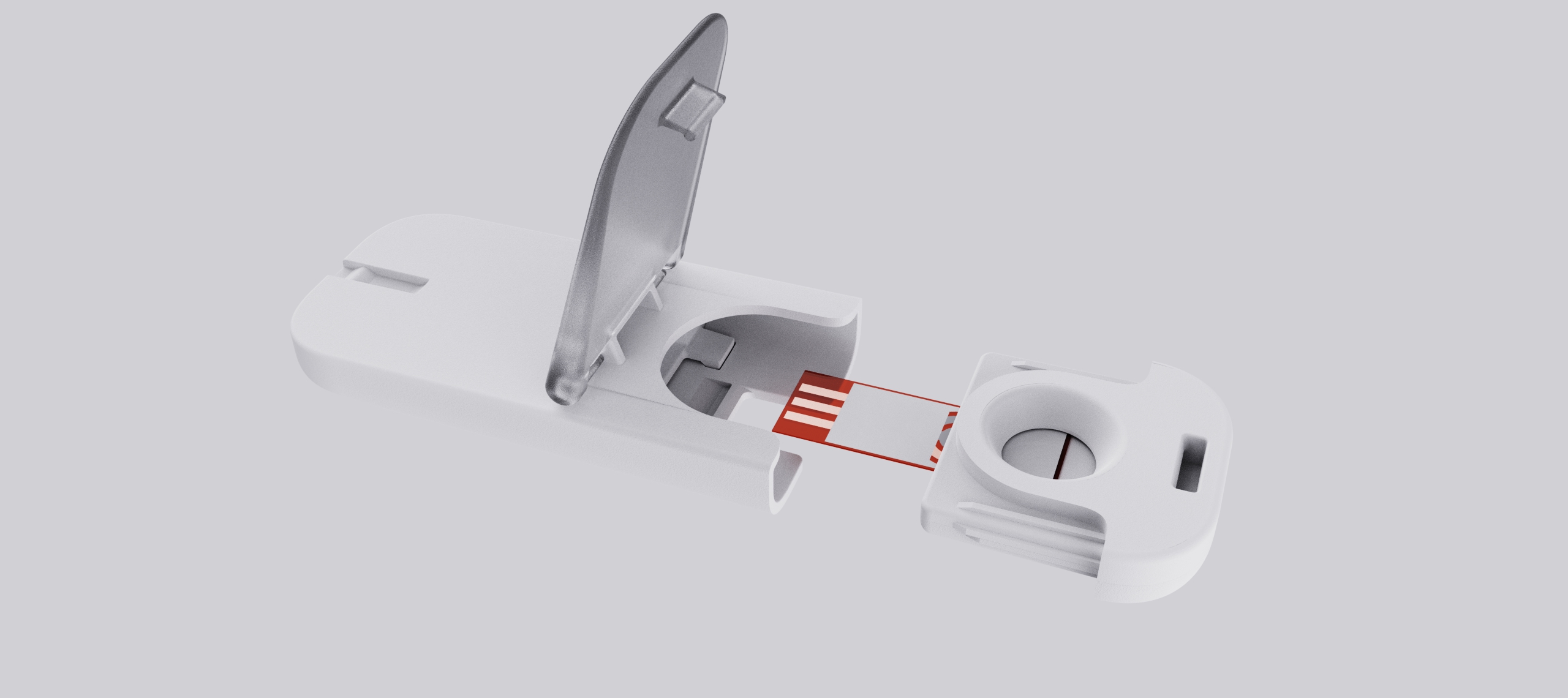
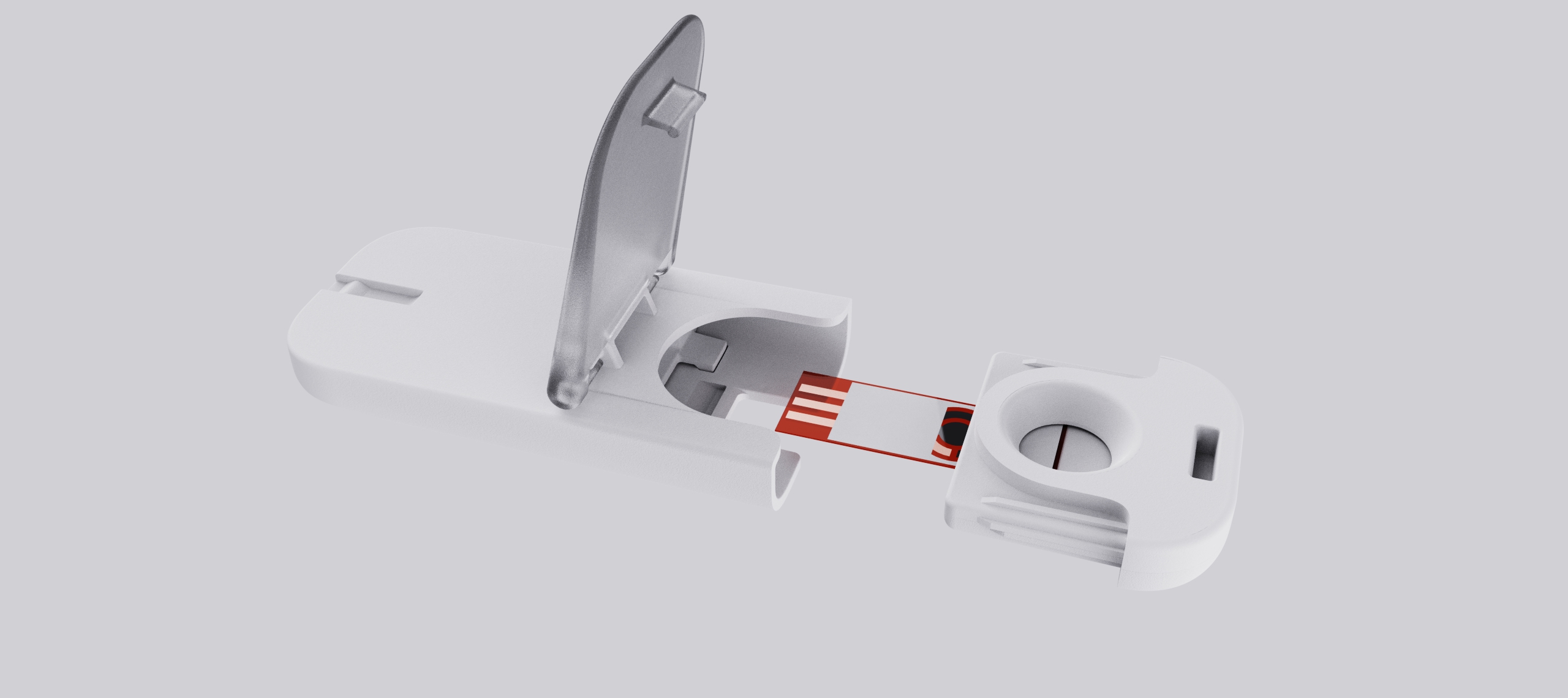
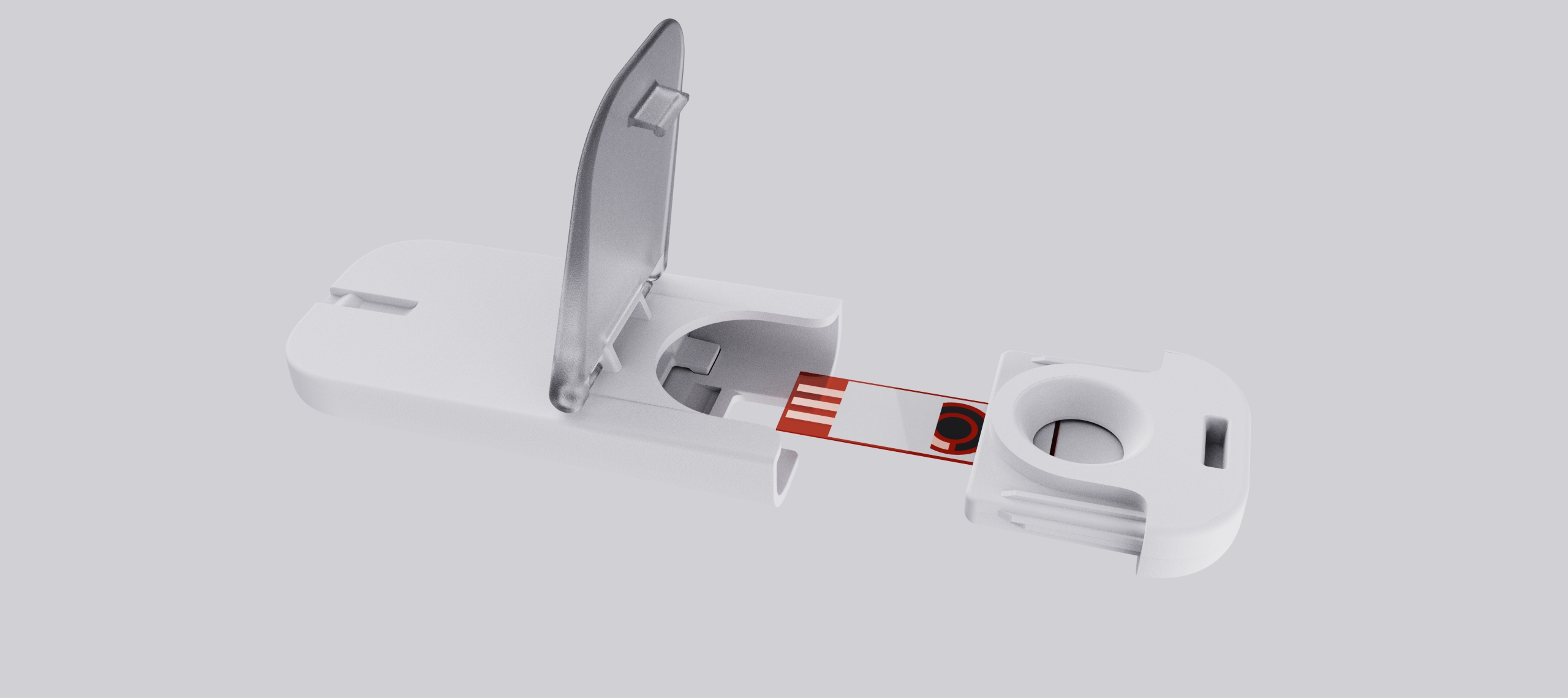
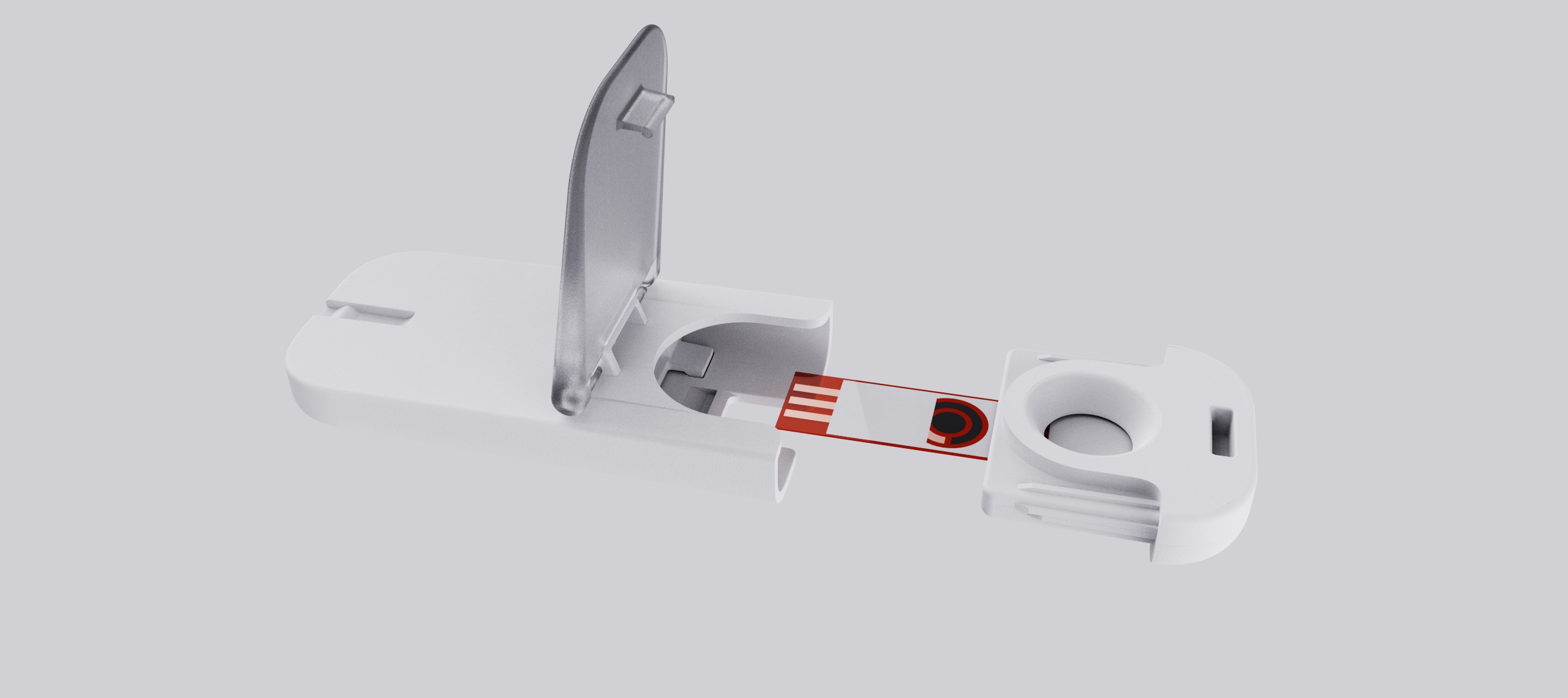
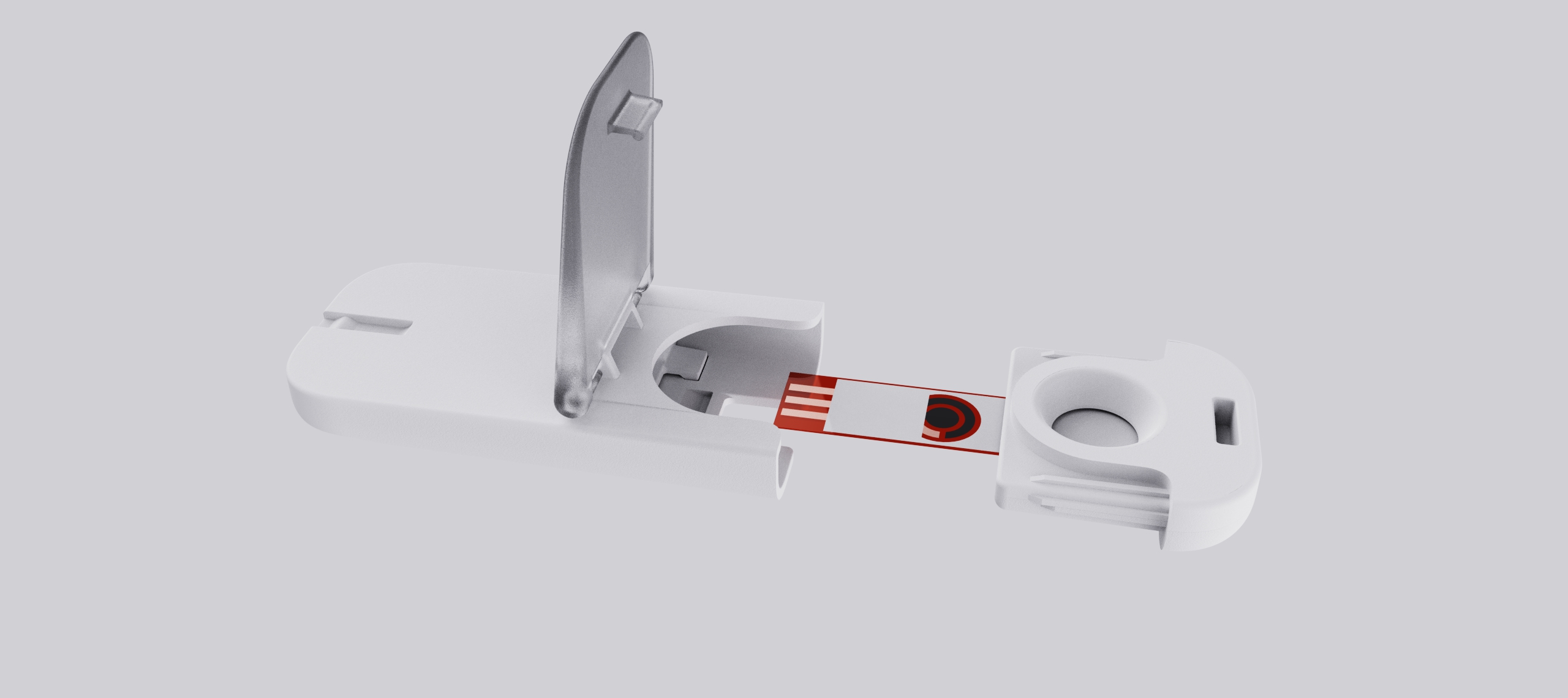
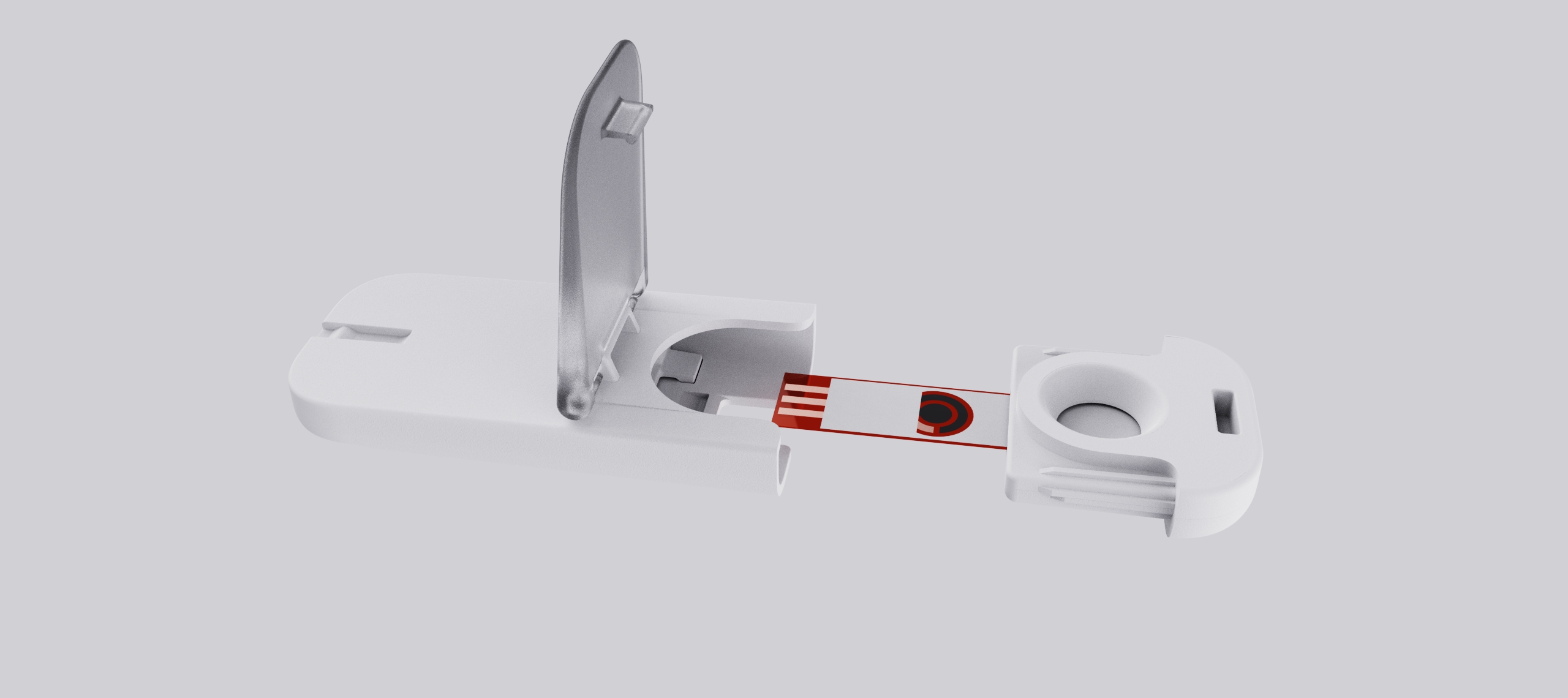
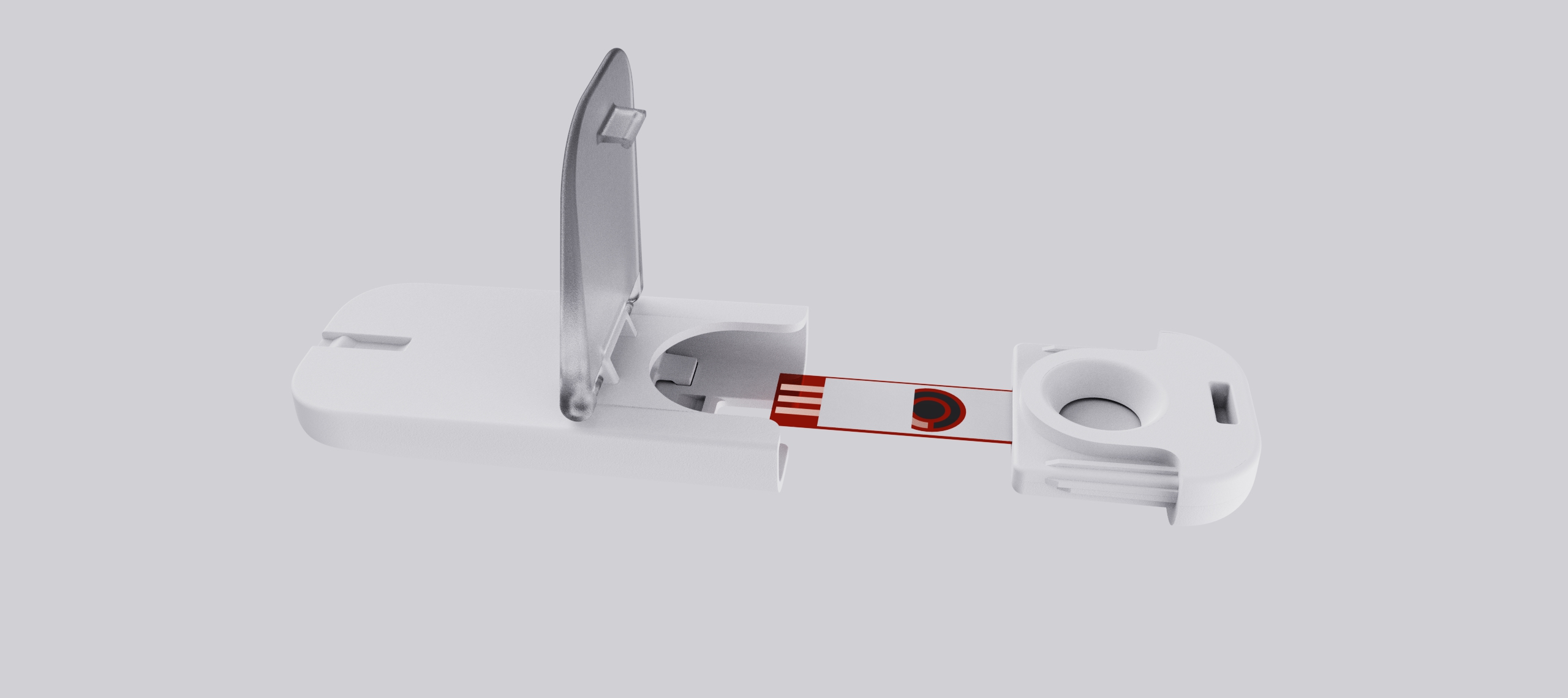
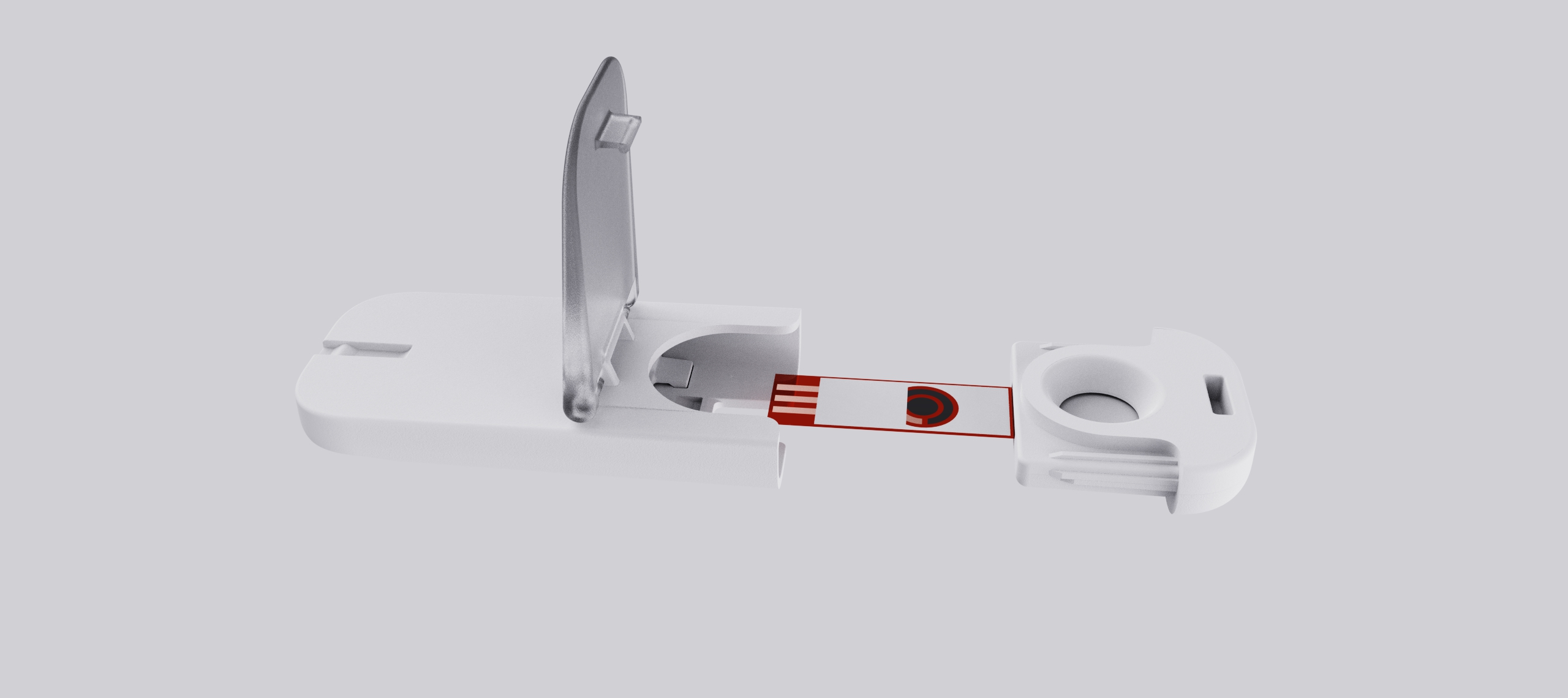
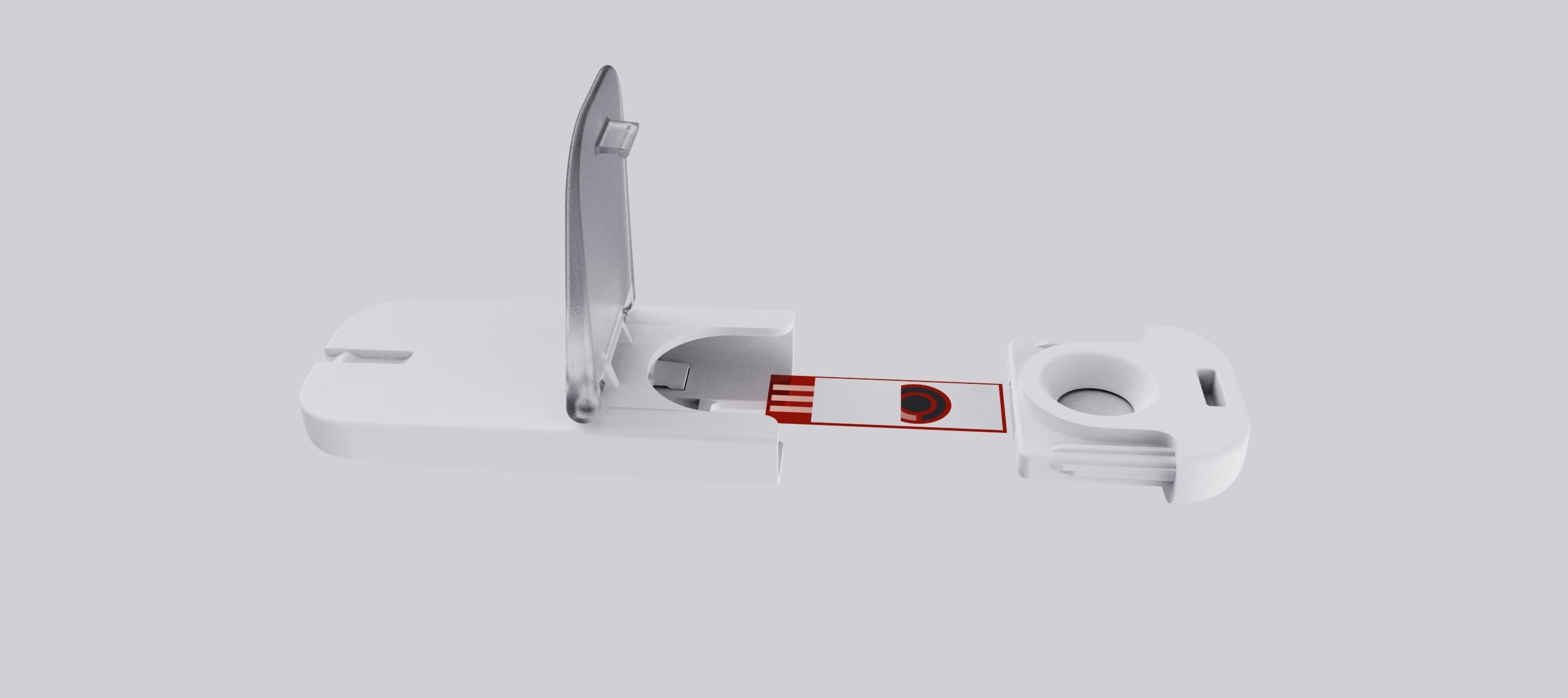
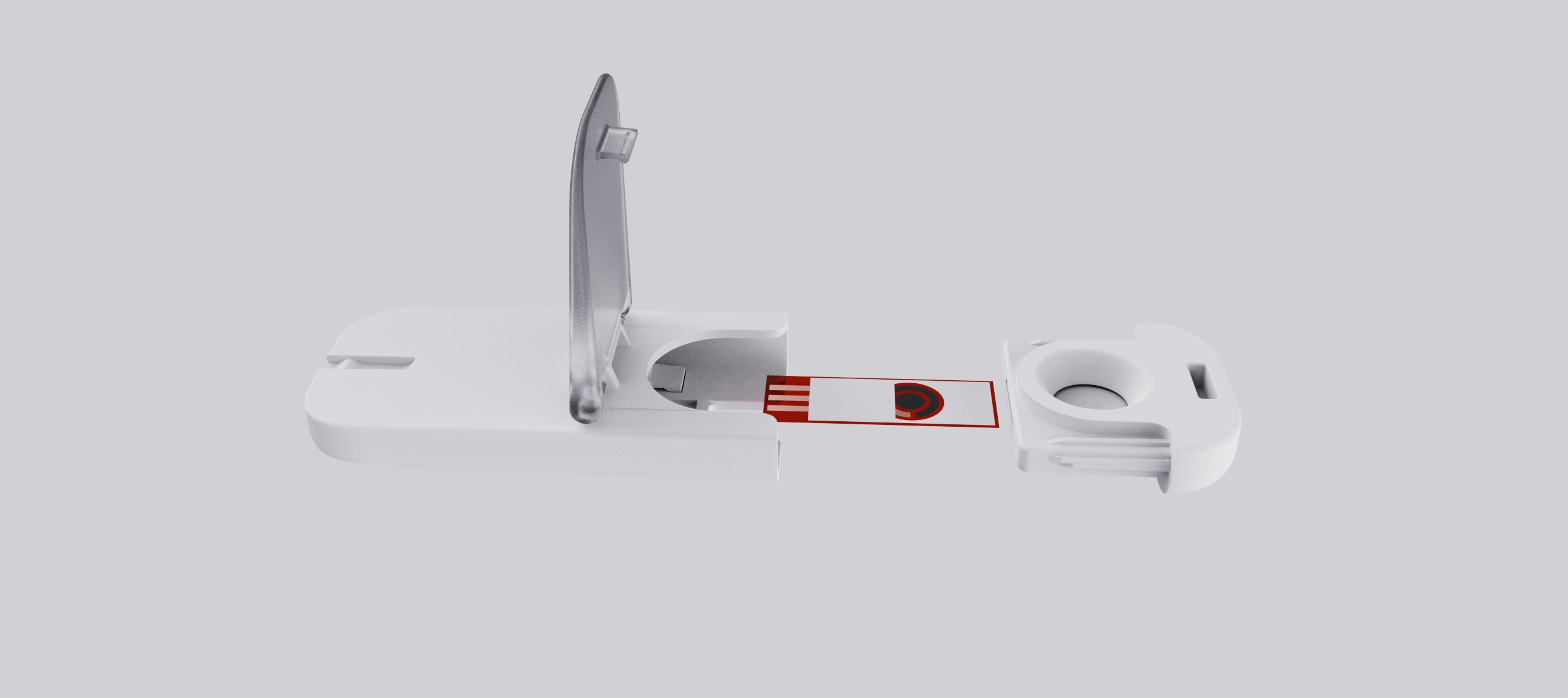
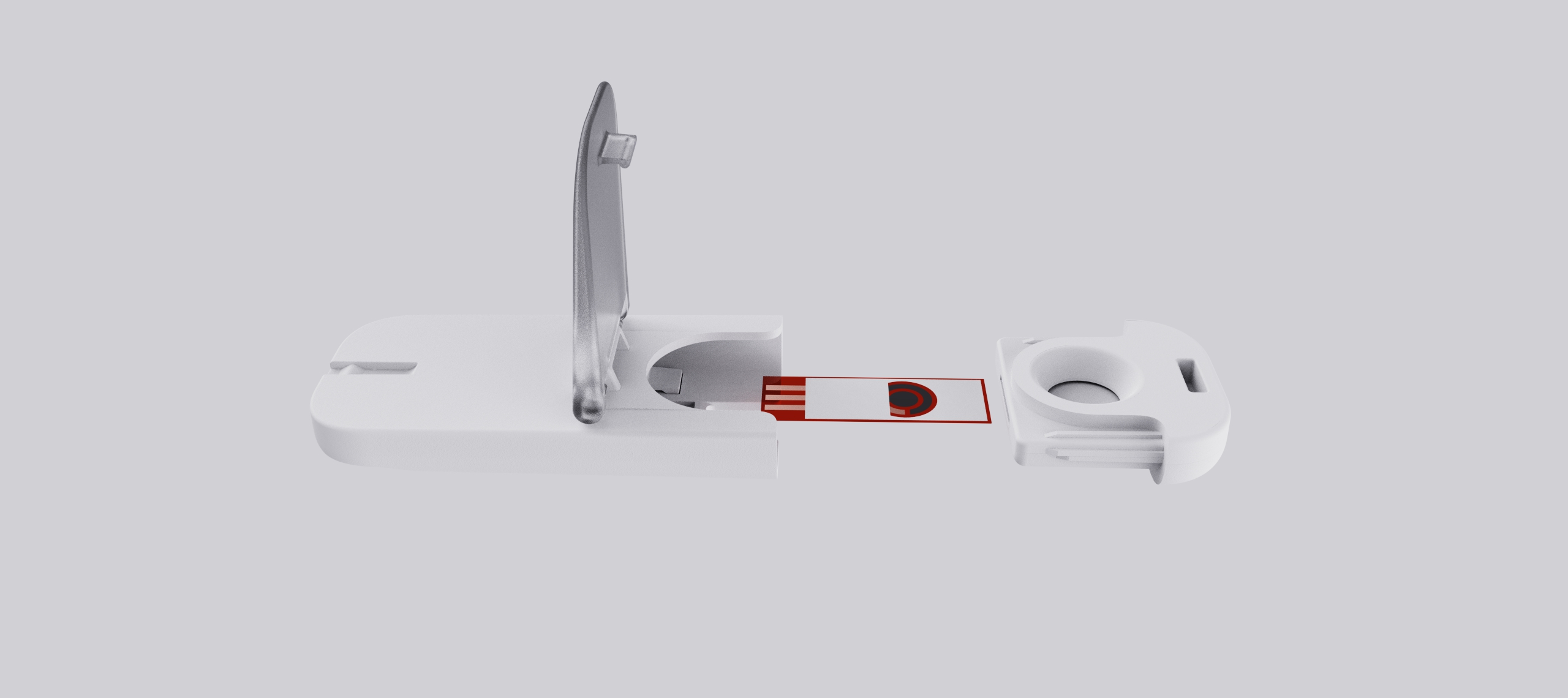
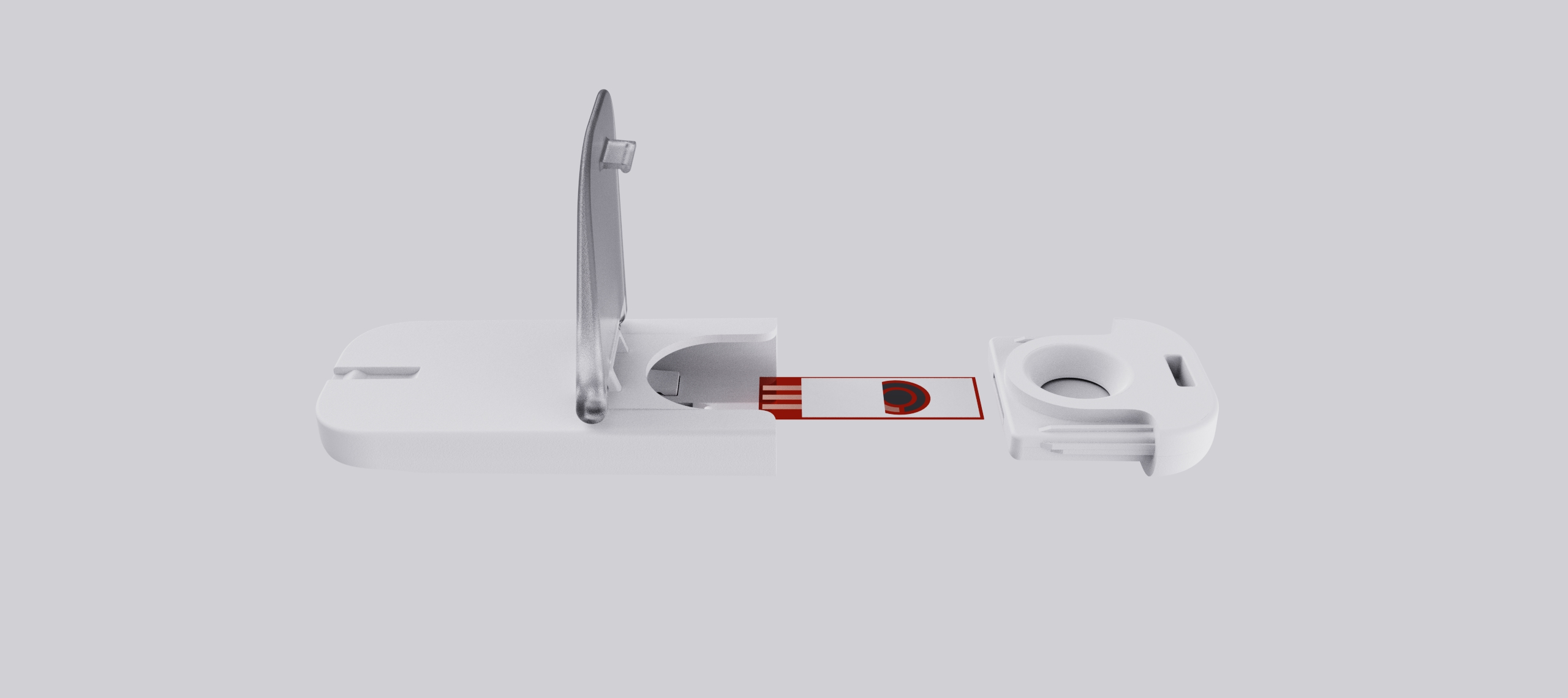
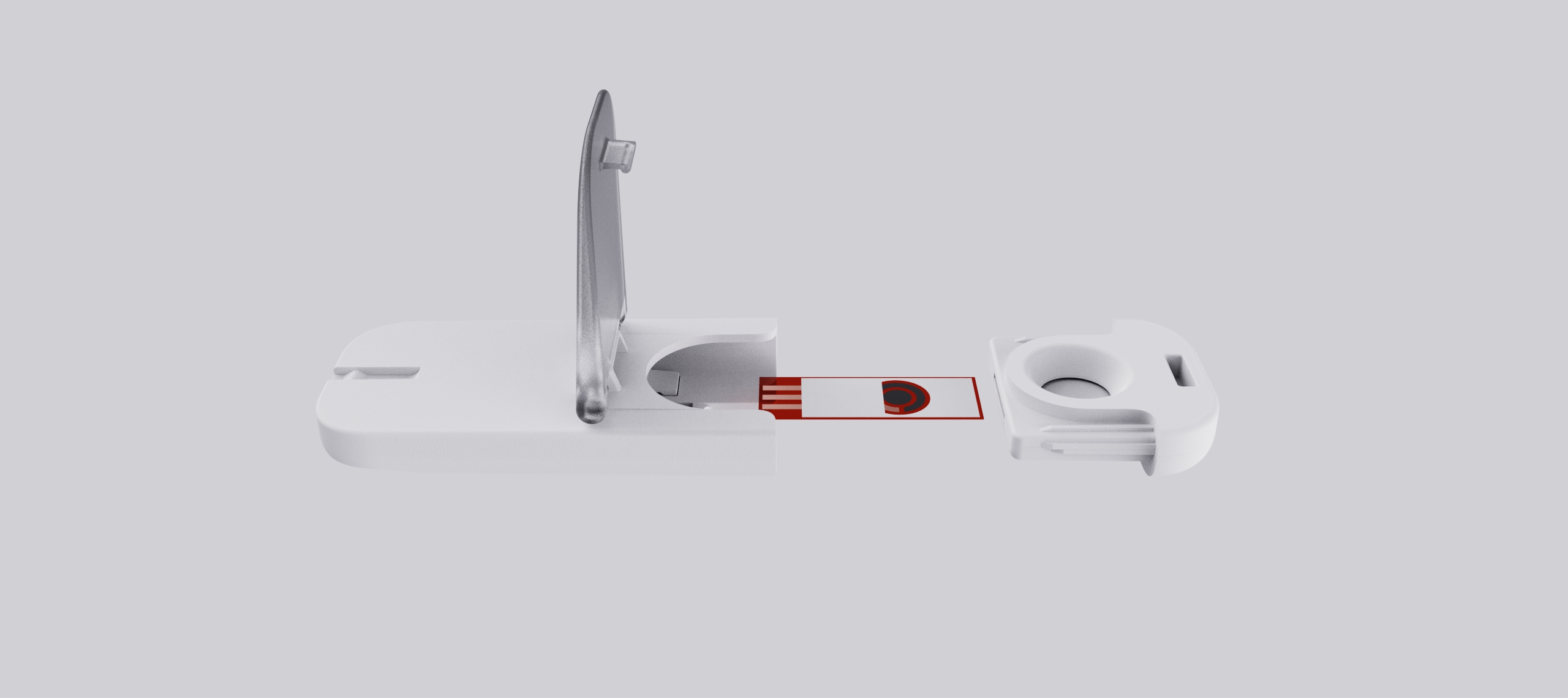
Real-Time Values
Translating technical research discoveries into commercialised healthcare solutions.
Through the design and development process, the D+I team applied conceptual, usability, mechanical, and electronics expertise to deliver an optimised three-component system supported by a simple three-step workflow. The system is capable of delivering almost instant real-time values via the supporting Smart Device Application developed by Singaporean studio SwagSoft, and provides an equalised concentration output in less than 5 minutes. This key milestone highlights the significant outcomes possible through the collaborative efforts of Nanomolar, the NUS Centre for Advanced 2D Materials (CA2DM), Design + Industry, and all partners in translating theories into technical research discoveries, and into commercialised healthcare solutions.

